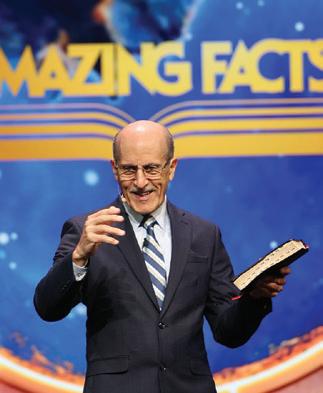JANUARY 2025: EMBRACING THE SLOW LIFE + THE ESSENCE OF FAITH + THE HEALING TOUCH OF JESUS + THROUGH THE FIRE + OUR BIRTHRIGHT


JANUARY 2025: EMBRACING THE SLOW LIFE + THE ESSENCE OF FAITH + THE HEALING TOUCH OF JESUS + THROUGH THE FIRE + OUR BIRTHRIGHT




Flight 3:16 is a complete VBS kit that includes supplies for 14* children! In the kit: Passports Souvenir postcards Luggage tags And more!
*Order more supplies as needed.




Imagine slowing down and savoring alone time with God.
SABBATH REST | JO ANN DAVIDSON
Looking for proof that God is love? Look no further than the seventh day.
TREASURE IN EARTHEN VESSELS | ANGELINE D. BRAUER
Thriving through the firing process
Too
“Your time alone with God can slow down and simmer like homemade soup bubbling on your stove.”
38 THE JOY AND REWARD OF THE REDEEMED ELLEN G. WHITE
He’s coming! Read this and get excited!
40 THE ESSENCE OF FAITH FILIPPO ALMA
A kindergartener could understand it.
44 THE HEALING TOUCH OF JESUS MARK MASHBURN
When you’re confronted with the untouchable

48 ONE PIECE OF LITERATURE, 2,790 BAPTISMS
PAUL DAMAZO AND NORMA WINDERS
One seed results in a heavenly surprise.
52 ABIDE HEATHER VANDENHOVEN
One day brought important lessons on staying with Jesus
56 ALCOHOL AND AN ABUNDANT LIFE
PETER LANDLESS AND DUANE
MC BRIDE
Righting the record on alcohol and health
» Adventist Communicators Using AI Should be Truthful, Editor Says
» Volunteers Prepare More Than 6,000 Gifts for Prisoners
» SSD Leaders Hold Sendoff Ceremony for More Than 30 Missionaries
» In Libya, Adventist HealthCare Legacy Sparks Visit With Partnership Potential
» Hope Channel International Achieves Historic Server Transition
» Global Mission Centers Director Kleyton Feitosa Dies at 49
60 OUR BIRTHRIGHT GREGORY MILTON
Changing from fixed thinking to a growth mindset
72 GOD’S WORK IN THE HEAVENLY CITY RACHEL LEFFLER
Answering difficult questions


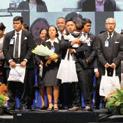

EDITORIAL
5 JUSTIN KIM
BUSY HERE AND THERE DEPARTMENTS
7 LETTERS 67 HOUSE CALL 68 EDITORS’ PICKS COLUMNS
23 CLIFF’S EDGE
CLIFFORD GOLDSTEIN
37 THE PIONEERING PASTOR SHANE ANDERSON
51 BEYOND BORDERS KATIE WATERBROOK
65 TRANSITIONS
CHANTAL AND GERALD KLINGBEIL
FOUNDED 1849. PUBLISHED BY THE GENERAL CONFERENCE OF SEVENTH-DAY ADVENTISTS®
PUBLISHING BOARD
Ted N. C. Wilson, chair
Guillermo Biaggi, vice chair
Justin Kim, secretary
Audrey Andersson, G. Alexander Bryant, Williams Costa, Paul H. Douglas, Mark A. Finley, James Howard, Erton Köhler, Geoffrey Mbwana, Magdiel Perez Schultz, Artur Stele, Ray Wahlen, Karnik Doukmetzian, legal advisor
EDITOR Justin Kim
ASSOCIATE EDITORS Sikhululekile Daco, John Peckham
ASSOCIATE DIRECTOR Greg Scott
COMMUNICATION DIRECTOR/NEWS EDITOR Enno Müller
DIGITAL PLATFORMS DIRECTOR Gabriel Begle
ASSISTANT EDITORS Beth Thomas, Jonathan Walter
FINANCE MANAGER Kimberly Brown
ART DIRECTION AND DESIGN Brett Meliti, Ellen Musselman/Types & Symbols
LAYOUT TECHNICIAN Fred Wuerstlin
COPY EDITOR James Cavil
OPERATIONS MANAGER Merle Poirier
EDITORIAL ASSESSMENT COORDINATOR Marvene Thorpe-Baptiste
SENIOR ADVISOR E. Edward Zinke
AD SALES Glen Gohlke
CIRCULATION/DISTRIBUTION Rebecca Hilde, Sharon Tennyson
TO WRITERS: Writer’s guidelines are available at the Adventist Review Website: www.adventistreview.org and click “About the Review.” For a printed copy, send a self-addressed envelope to: Writer’s Guidelines, Adventist Review, 12501 Old Columbia Pike, Silver Spring, MD 20904. E-mail: revieweditor@gc.adventist.org.
Website: www.adventistreview.org.
Unless otherwise noted, Bible texts in this issue are from the New King James Version. Copyright © 1979, 1980, 1982 by Thomas Nelson, Inc. All rights reserved. Bible texts credited to NIV are from the Holy Bible, New International Version Copyright © 1973, 1978, 1984, 2011 by Biblica, Inc. Bible texts credited to NRSV are from the New Revised Standard Version of the Bible, copyright © 1989 by the Division of Christian Education of the National Council of the Churches of Christ in the U.S.A. Used by permission. All rights reserved worldwide. Scripture quotations marked ESV are from The Holy Bible, English Standard Version, copyright © 2001 by Crossway Bibles, a division of Good News Publishers. Used by permission. All rights reserved. Scripture quotations marked NASB are from the New American Standard Bible, copyright © 1960, 1971, 1977, 1995, 2020 by The Lockman Foundation. All rights reserved.
Unless otherwise noted, all prominent photos are ©Getty Images 2025.
The Adventist Review (ISSN 0161-1119) is the general paper of the Seventh-day Adventist® church. It is published monthly by the General Conference of Seventhday Adventists®, 12501 Old Columbia Pike, Silver Spring, MD 20904. Periodicals postage paid at Silver Spring, MD, and additional mailing offices. Postmaster: Send address changes to Adventist Review, P.O. Box 5353, Nampa, ID 83653-5353.
Copyright © 2025, General Conference of Seventh-day Adventists®. PRINTED IN THE U.S.A.
SUBSCRIPTIONS: Twelve issues of the monthly Adventist Review, US$19.95, plus additional postage outside North America. Single copy US$2.00 plus shipping and handling.
To order, visit adventistreview.org/subscriptions or send your name, address, and payment to: Adventist Review subscription desk, P.O. Box 5353, Nampa, ID 83653-5353
ADDRESS CHANGES AND SUBSCRIPTION QUERIES: adventistreview@pacificpress.com or call 1-800-545-2449
ADVENTIST REVIEW MINISTRIES OFFICE: support@adventistreview.org
1 2
THE MOST POPULAR STORIES ON ADVENTISTREVIEW.ORG LAST MONTH:

Leaders Gather to Explore the Sacred Rest of Sabbath, by AdventHealth for Mid-America Union Conference Outlook

Japanese Adventist Young People Enjoy First Congress in Nine Years by Northern Asia-Pacific Division
3

Return of the Prodigal Pastor, by Dennis Sellers
4 5

First Seventh-day Adventists Are Baptized on Futuna Island by Kiera Bridcutt, Adventist Record

In Indonesia Seventh-day Adventists Launch Professional Legal Association by West Indonesia Union Conference




It was a US$18 million penalty. All he had needed to do was keep an eye on a prisoner. But while he was preoccupied, the prisoner had escaped. This story comes from 1 Kings 20, where a prophet dramatizes this episode to sober up the wicked King Ahab. The prophet has his schoolmate punch him, and then he disguises himself with bandages over his eyes, like a soldier returning from the battlefield. When the king passes by on his presidential motorcade, the disguised prophet tells a story.
“Your servant went out into the midst of the battle; and there, a man came over and brought a man to me, and said, ‘Guard this man; if by any means he is missing, your life shall be for his life, or else you shall pay a talent of silver.’ While your servant was busy here and there, he was gone” (1 Kings 20:39, 40).
Some scholars estimate a talent of silver to be 3,000 shekels. If one earned 10 shekels a year (Judges 17:10) and assuming an annual income of about US$60,000, a talent of silver was equivalent to US$18 million.
In short, a senior officer told a junior officer to be responsible for a prisoner. While the junior officer was “busy,” the prisoner escaped, leading to millions of dollars in penalties.
We are not called to busy-ness, but to faithfulness.
What does this passage mean? The answer is found in the context of chapter 20.
Ben-Hadad, king of Aram, was attacking Israel. After a long battle, God delivered this enemy king into Ahab’s hands. But instead of faithfully holding his prisoner, Ahab was beguiled by Ben-Hadad’s promises of cities and streets (verse 34). God (the senior officer) gave Ben-Hadad (the prisoner) into Ahab’s (the junior officer) care. But Ahab, seduced by Ben-Hadad’s temptation, trickery, and trade—being “busy here and there”—breached his duty. How many of us have let our spiritual responsibilities go because of being busy here and there with the world’s temptations, tricks, and trades?
We are busy accumulating goods, amassing wealth, and driving luxury chariots. We are building properties to store items to impress people we don’t like. We are tempted with the cities and streets of Ben-Hadad, full of shopping malls, pashmina shawls, marble walls, and personal Taj Mahals. We are busy with binging on Netflix, getting social media clicks, and going on extravagant trips. We are busy here and there.
We are busy spending our health to get wealth. Then we spend our wealth to get back our health.
While busy, one day we will lose our parents, through neglect. While busy, one day we will lose our spouses, through divorce. While busy, one day we will lose our children, through growing up. While busy, one day we will lose our salvation, apathetic to the presence of Jesus in our lives. We are busy here and there.
We are not called to busyness here and there. We are not called to be busy at church, in the home, or within society. Rather, we are called to faithfulness. We are to guard ourselves against those things that war against the soul. We are called to be responsible for the souls nearest to us. We are called to stand where Jesus wants us to stand and sit where Jesus wants us to sit.
Just as Christ was never busy but always faithful, we are to follow His faithful feet. If not, something worse than a $18 million penalty will happen. Ben-Hadad will return (1 Kings 22:35), and we will die inside the very chariot that we made our deal in. Let us not be busy here and there, but faithful to Jesus anywhere and everywhere.




Luise Schneeweiss’ article “Love in Practice” (November 2024) was beautifully and thoughtfully written. Thank you for being brave enough to share it. It gives a lot to think about!
Barbara Woodruff Forss
I was gratified to read the November issue “Compassionate Conversations: Relationships and Sexual Identity.” The articles reflect the growing recognition that gender dysphoria is not primarily a behavioral choice, but the outcome of fetal development influenced by genetics. It is critically important that we accept everyone, regardless of orientation, as a child of God, worthy of our love and respect. Christ specialized in the marginalized, and He expects nothing less from us today.
Richard Hart
Dennis Sellers’ article “Return of the Prodigal Pastor” (November 2024) was both heart wrenching and heartwarming to read. I do agree, some of our members do not represent the church and Christ well, as we can be judgmental and cold. Yet, despite that, I’m so happy that he returned to the church. Though easier said than done, this is why
Even when we wander far away He never leaves us nor forsakes us.
CHERRY-ANN THOMAS
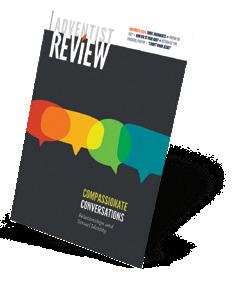
it is so important to keep our eyes fixed on Jesus, not on man.
Donna Ible-White
It distresses me when I see members, former members, some visitors, treated poorly in our churches. As Dennis Sellers shares in “Return of the Prodigal Pastor,” I have been there myself, rejected for something I didn’t do. Unfortunately, we (the church) can be our own worst enemy. Thank God Dennis Sellers found his way back despite the “hurdles.” God is good all the time.
KLS (online comment)
Reading Dennis Sellers’ article in the November 2024 issue of Adventist Review has me praising God for His mercy and grace toward us sinners. Even when we wander far away He never leaves us nor forsakes us. Others may forsake us and condemn us, but we are always on our Lord’s radar.
Cherry-Ann Thomas
“Return of the Prodigal Pastor” is a very inspiring article that touched my heart and challenged me. Let us stop being judgmental and pray to have Christ’s love. After all, we are all fallen creatures.
Henry Ragira
What a pleasure it was to read Andrew McChesney’s article “I Don’t Know Jesus” in the November 2024 issue of Adventist Review. It brought many wonderful memories to my mind. My wife, Marianne, and I were among a group of pioneers in sharing the gospel among the Himbas in the 1990s. Pastor Sabyn Kapitango Ndjanba, not an Adventist at that time, translated for us when we visited the villages, taking the good news and treating the sick. It’s so wonderful to see how Pastor Sabyn accepted Jesus and became one of His disciples. What a blessing! There are still many Himbas who have never heard about Jesus. Marianne has passed away, but deep in my heart there is an openness to go back and continue the still-unfinished work of telling the Himba about Jesus, if it is His will.
Viriato Ferreira
Students at Holbrook Indian School (HIS) have many challenges. Access to nutritious food should never be one of them. With continual increasing costs, we need your help now more than ever to support one of our students’ most basic needs. With a gift of just $27, you’ll provide a day’s worth of meals for a child. For $189, you can feed a child for a week, and for $756, you can cover a child’s need for a month. Every meal is thoughtfully planned with nutrition in mind.


Make a gift at 928-524-6845 or visit HolbrookIndianSchool.org/FeedAStudent

“This achievement represents not just technical innovation, but a powerful demonstration of cooperation in the church.”
Richard
Stephenson, p. 15

Norel Iacob, Signs of the Times Romania editor, presents “Critical Thinking and AI” at the 2024 GAiN Europe event in Budva, Montenegro, on November 17.
NOREL IACOB SHARES TIPS ON HOW TO USE IT WHILE AVOIDING ITS PITFALLS.
ADVENTIST REVIEW NEWS
Seventh-day Adventist communicators who decide to use artificial intelligence (AI) as a complement to their work should stay truthful and ethical as they do, editor Norel Iacob said in his presentation at the 2024 Global Adventist internet Network (GAiN) conference.
Iacob, who teaches systematic theology at Adventus University and serves as director of Adventus University Press and executive editor of the ST.network platform, spoke at the event in Budva, Montenegro, on November 17.
In his presentation, titled “Critical Thinking and AI,” Iacob called communicators to be aware of how large language models (LLMs) work
and to hold to high ethical standards as they engage with new AI technologies as a tool for higher-quality work.
Iacob listed several of the issues that have arisen with the seemingly ubiquitous presence of AI. He explained that among other things, AI can misinform us through fabricated information (called “hallucinations”) and oversimplifications; disinform by reflecting biases; manipulate us by mimicking human emotions; and tempt us to act unethically through plagiarizing and a lack of transparency.
“AI can cause a loss of agency through a subtle framing of the an-
swers or our overreliance on its outcome,” Iacob said as he shared some of the challenges in dealing with AI technologies. He explained that in an e-commerce context, for instance, “AI can promote a specific product, subtly influencing you to purchase [it], even without you realizing what you are doing,” he said.
At the same time, in your interactions with AI you might feel that “you have somebody to talk to,” Iacob explained. “You feel you are having a real dialogue with an entity, and because it is very polite, very patient, [and] never swears at how you do things, you are becoming vulnerable and more susceptible to accept its ideas.”
Against that background it is essential to remember that “AI is a tool, but it’s not human,” Iacob emphasized. Thus, “it lacks awareness or reasoning as it generates responses based on probabilities, not conscious intent,” he said. It is one of the reasons the human touch—human oversight—is critical for ensuring accuracy and contextual appropriateness, he added.
Iacob urged Adventist communicators to adopt a “smart and critical use” of AI, which includes cross-verification, using AI as an ideation tool (brainstorming, generation of ideas), and audience insights. “Use AI as an efficiency booster—to streamline such tasks as summarizing and extracting themes—and for introductory knowledge,” he said, “but rely on deeper research for comprehensive understanding.”
AI has lately become a tool for preachers who need to work on a sermon, Iacob acknowledged. In fact, AI can suggest themes, structures, and related ideas, and can certainly help to refine a sermon. But “do not let AI write the entire sermon; rely on personal study and prayer,” he emphasized. “Never forget the role of the Holy Spirit impressing the person writing the sermon,” as AI cannot vouch for that.
Iacob also called preachers to disclose AI’s role if it significantly
shapes the message, and to avoid mimicking the styles of others. “Focus on your own voice and integrity,” he advised.
In the last part of his presentation, Iacob shared examples of instances when a communicator using AI does not need to disclose it and when they should do so. According to Iacob, a person does not need to disclose its use when AI is used for phrasing or clarity, without altering the substance, and when they treat the tool as a “reader” to improve flow and coherence. “But you need full disclosure when AI significantly shapes the content and structure, when you use AI-generated content, and when you use analogies, examples, or AI summaries . . . that impact the work significantly,” he said.
On the sideline of Iacob’s presentation, Marcos Paseggi, senior news correspondent for Adventist Review and Adventist World, said he agreed, explaining that AI should be used as a tool to streamline what you already know how to do, not as a journalist or author replacement for what you cannot do.
“AI can certainly help you to work faster and more efficiently, but anytime an AI tool is used to make substantial changes to a piece of writing, the author should acknowledge it,” Paseggi said. “On the other hand, if an author uses AI to create projects that they could never accomplish on their own, then no matter how many news stories,
articles, or books they byline, they are not an author but a fraud.”
For authors working for Adventist organizations, this presents a new layer of ethical conundrum. “It goes to the core of your integrity as a Bible-believing Seventh-day Adventist Christian,” Paseggi emphasized, acknowledging that so far, the system relies only on each person’s honesty. “Having an accountability process of ethical disclosure is, as far as I know, still pending and an ongoing issue, even with some Adventist authors who almost overnight have begun to promote themselves as accomplished writers,” he said.
In closing his November 17 presentation, Iacob called Adventist communicators and others not to forget the human touch when using AI. He challenged communicators to “pause and reflect” after coming up with an AI-produced text, as he then posed several questions to them. “Did you really choose those words? Did you really dive into the text, reflect, and wrestle with its meaning? Or did AI shape your message without you even noticing?” Iacob asked. “It is very wise to use LLMs—I use them all the time,” Iacob said. “But we need to be discerning and . . . in control all the time. We must verify everything and make sure that our unique voice is still there at the end. And this is the inescapable, inevitable human touch.”

INITIATIVE IS PART OF AN ANDREWS UNIVERSITY PARTNERSHIP WITH CHRISTMAS BEHIND BARS.
NICHOLAS GUNN AND SARA HAMSTRA, ANDREWS UNIVERSITY, AND ADVENTIST REVIEW
On October 27, more than 500 Andrews University students, faculty, and community members gathered for the third annual Christmas Behind Bars service event. During the project, which took place on the Andrews University campus in Berrien Springs, Michigan, volunteers packed thousands of gift bags with snacks, inspirational literature, and messages of encouragement for incarcerated individuals.
This year’s program marked a milestone as volunteers worked to prepare more than 6,300 packages destined for inmates across Nebraska’s state prisons. The impact of the event went beyond providing treats; it offered a message of hope and connection for those spending the holiday season behind bars, organizers said.
The annual event at Andrews University is a testament to the university’s commitment to fostering service and community involvement among its students, university officials said. Teela Ruehle, director of Student Missions and service projects at Andrews, shared her excitement about the event, describing it as “one of my favorite projects.” Ruehle sees the event as a powerful opportunity for students to experience the importance of service. She noted, “It’s huge for
every person to experience serving. This is a way to open their eyes to volunteering, and, let’s be real, God called us to serve.”
Ruehle emphasized the emotional impact these packages can have on recipients, explaining that each bag contains a message that can “open their eyes to the love of Jesus Christ.”
Esther Knott, director of the InMinistry Center at Andrews University’s Seventh-day Adventist Theological Seminary, was instrumental in securing funds and organizing this year’s event. Knott helped raise $8,000 from various sources, including the North American Division’s Compassion Fund, campus ministries, and local churches.
Knott also initiated a collaboration with Christmas Behind Bars earlier in the year, during Andrews University’s annual employee Fall Fellowship. The university provided more than 300 Andrews Study Bibles for individuals at a women’s correctional facility in Illinois. At the event, employees and their families wrote Scripture passages, references for readers to look up, personal notes, and signed their first names in the Bibles, which were included in care packages. Knott also had the opportunity to help Lemuel Vega, founder of Christmas Behind Bars, distribute the Bibles to women at
the correctional facility. “One woman said that she hadn’t had a Bible for 10 years,” she recalled. “She lost hers when her house burned down.”
Beyond meeting a logistical need, these events have had a lasting impact on those who participated. Knott observed that service events on campus provide a unique opportunity for community building, such as offering faculty a chance to work with students in a new way beyond in the classroom. “As a faculty member on campus, when my seminary students are here, I get to see who steps in because they see a need,” Knott said. While working together, volunteers get a glimpse of the profound impact their efforts have, not just in the moment but also in the lives of those who receive the packages.
For many students Christmas Behind Bars is a first step into the world of volunteerism. Ruehle highlighted the significance of this experience, noting, “A lot of our students come here and they haven’t volunteered before, and this is a great way to just open that door and realize you can do something to impact others, no matter how small.”

REGIONAL CHURCH LEADERS MET WITH GOVERNMENT OFFICIALS TO PROBE COOPERATION OPPORTUNITIES.
MARTINA GOMEZ DE LA FUENTE, MIDDLE EAST AND NORTH AFRICA UNION MISSION, AND ADVENTIST REVIEW
Ateam of health-care professionals from the Hearts for Mission International, accompanied by Rick McEdward, president of the Middle East and North Africa Union Mission (MENAUM), and Marcia McEdward, MENAUM’s health ministries director, recently wrapped up a five-day trip to Libya. Their visit had the goal of supporting the country’s health-care development, regional church leaders reported.
The delegation was welcomed by the Libyan government through the Office of International Cooperation from the Ministry of Health and the National Council on U.S.Libya Relations (NCUSLR) based in Washington, D.C. The team worked closely with Libyan health
officials to explore ways to provide support and share knowledge to enhance the country’s health-care system
Hani Shennib, a U.S,-based, Libyan-born medical professor specializing in cardiovascular and thoracic technology and surgery and president of NCUSLR, was instrumental in making the visit possible.
The group met with His Excellency Othman Abdul-Jalil, minister of health, and his team, who shared the government’s ongoing efforts and plans to improve health care across the country.
In return, Rick and Marcia McEdward had the opportunity to introduce some Seventh-day Adventist health, educational, and humanitarian initiatives and programs offered in the
region. One of these programs included Breathe Free, a global Adventist initiative that aims to assist individuals to quit smoking and support them in their journey to a healthier lifestyle. The group also met with the president of the University of Benghazi, Ezzedine Al-Darssi, who shared the status of the Faculty of Medicine and potential means of collaboration.
The visit held particular significance as the team toured the Benghazi Children’s Hospital. This building holds special importance to the Adventist Church because it used to be the Benghazi Adventist Hospital, which opened in 1966 under Roy S. Cornell’s leadership.
Benghazi Adventist Hospital started as a small 27-bed facility, later growing and relocated as a modern 60-bed hospital by 1968. What made it special was its diverse team; more than 40 families from the United States, Philippines, Korea, India, Australia, Indonesia, and several Middle Eastern countries worked there, alongside many Libyan healthcare workers.
The hospital did more than treat patients. It ran a charity clinic twice a week that helped 50 to 100 people who couldn’t afford medical care. The former hospital team also traveled to distant towns and set up a mobile clinic, bringing hope and essential health care to people who lived in remote places. They also ran an ambulance service that helped both city residents and workers from desert oil fields when an emergency happened.
The hospital was a beacon of hope for the community, becoming so well known for its excellent service that King Idris I of Libya visited in 1968 and called it the “number-one” hospital in the country. This reputation can be attributed to the institution’s founding purpose, which is inscribed on the dedication stone: “To the Glory of God and the Service of Humanity.”
Throughout the five-day visit, the delegation engaged with numerous medical institutions and
academic centers, including AlJalah Hospital, Dar Al-Hekma Hospital, Shahat Teaching Hospital, and Benghazi Medical Center. They also connected with the Medical Colleges Complex at Benghazi University (a public university with more than 85,000 students). At the University of Benghazi, besides meeting president Ezzedine Al-Darssi, the delegation also briefly met Martin Longden, British ambassador to Libya. Finally, they visited the College of Medical Technology in Benghazi.
Visits facilitated discussions on how international organizations and Libyan institutions can collaborate to elevate health-care standards and medical education, with the long-term goal of enhancing the quality of local treatment and services, leaders reported.
Delegates also visited Shahat, where they focused their time on Shahat City Pulmonology Specialty Hospital. Officials from the institution welcomed the group with a tour of the facilities, followed by a meeting that could be described only as insightful and full of passion, and characterized by Libyan hospitality. The team also visited the ruins of Cyrene, which hold biblical significance as the place of origin of Simon of Cyrene, who is known as the man who carried the cross of Jesus on the way to His crucifixion.
Both the Hearts for Mission International and the regional Adventist office teams were given
special mementos of partnership and appreciation by the Ministry of Health, with the hope of future collaboration for the people of Libya. Each of the guests were presented with a personalized token of appreciation with a photo of the original 1966 dedication stone and a cutting of a Cypress tree planted at the Benghazi Adventist Hospital, with the following words: “This is the shell of the cypress tree that you planted in 1968 in the soil of this good land, which breathed the air of Benghazi until the city was decorated with it, and now you are returning to your green plant to irrigate it with new tenderness for peace.”
The team that participated in this trip left Libya with their hearts filled with the hope of returning in the future with more healthcare professionals to supply the needs that arise in the North African country. Their visit not only honored the enduring legacy of the Adventist Healthcare System but also showed the spirit of service that characterizes Adventists around the world.
Hearts for Mission International is a not-for-profit organization founded to perform open heart surgeries in Africa. It is operated by a dedicated group of volunteers including surgeons, physicians, nurses, and administrators that perform surgeries in countries who do not have adequate services for cardiac surgery.
Missionaries and their families stand together during a sendoff ceremony at the Southern Asia-Pacific Division headquarters in Silang, Cavite, Philippines.
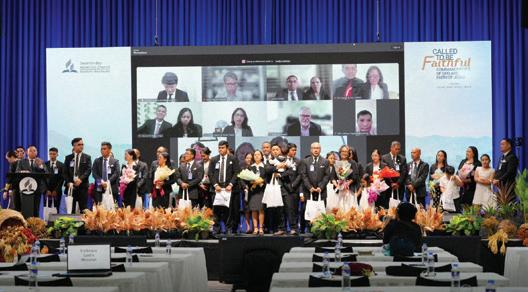
THEY WERE DEPLOYED ABROAD AS PART OF THE CHURCH’S MISSION REFOCUS INITIATIVE.
After a send-off ceremony, more than 30 missionaries from the Southern Asia-Pacific Division (SSD) embarked on their journeys to establish Adventist presence in countries and regions that have not yet been reached.
The world church’s Mission Refocus program aims to establish Adventist missions in regions that are yet to experience the Adventist Church’s presence. The SSD, based in the Philippines, has decided to reach beyond its own territory to support other regions. Through collaborative evangelistic campaigns held outside its borders, SSD leaders have shown solidarity with neighboring divisions, leaders reported. As part of the Mission Refocus initiative, 32 missionaries are gearing up for service in more than 12 countries.
During the send-off ceremony, SSD administrators and representatives from the church’s Northern Asia-Pacific Division (NSD) signed a Memorandum of Understanding outlining each organization’s responsibilities in supporting and accommodating Mission Refocus missionaries. This agreement solidifies a collaborative commitment to ensure that the missionaries are well equipped and supported as they begin their work in new regions, leaders said.
David Trim, General Conference director for Archives and Statistics, attended the event, which marked the largest number of missionaries ever sent at one time from any Adventist division, according to regional church leaders.
Trim, drawing from the biblical accounts in the books of Judges and Joshua, delivered a message of encouragement and hope. Citing passages such as Judges 2:7 and Judges 3:11, 12, and 15, he highlighted how Israel’s history shows that wherever sin is found, God’s redemptive power is already at work.
“Redemption does not come from human strength but through divine intervention,” Trim emphasized, referring to the story of Ehud, the left-handed judge from the smallest Israelite tribe, Benjamin, through whom God brought deliverance. He explained that just as God used an unexpected hero in the Bible, He also uses missionaries who may feel inadequate, uncertain, or overwhelmed to do heroic things.
In his address Trim shared three key reflections for the missionaries to hold on to as they step into the unknown. He began by highlighting the importance of history, urging the audience to recognize that “our history matters.” These stories of God’s people are more
than past events; they serve as living examples of God’s active work in His people’s lives, Trim said. He emphasized that the stories preserved in church archives are powerful metaphors of God’s consistent, redeeming love throughout time.
Moving to the second point, Trim reassured the missionaries about God’s strength in human weakness. He reminded them that moments of doubt and uncertainty are not obstacles but rather unique opportunities for God to reveal His plans.
“God doesn’t rely on human strength,” he said. “He reveals His glory in our weakness.” He explained that times of doubt are precisely when God’s unfailing guidance becomes most evident, encouraging the missionaries to embrace these moments as part of their journey.
Finally, Trim reminded missionaries that each one of them has a mission, a specific calling from God. Drawing from the example of God’s redemption plan for Israel, he emphasized that no matter the challenges or uncertainties ahead, every missionary has a purpose within God’s grand design.
“God has a mission for each of you,” he said. “So trust in the divine purpose that has led you to this path.”
Hope Channel International established an Adventist-owned server network, made possible by partnerships between Adventist divisions and the network’s leaders worldwide.

HOPE CHANNEL INTERNATIONAL ACHIEVES HISTORIC SERVER TRANSITION
GLOBAL PARTNERSHIPS ACROSS REGIONS HELP TO ACHIEVE MILESTONE.
HOPE CHANNEL INTERNATIONAL AND ADVENTIST REVIEW
For the first time, Hope Channel International (HCI) is establishing a globally distributed, Adventist-owned server network, made possible by partnerships with Adventist divisions and Hope Channel leaders worldwide. This transition marks a major milestone, providing Hope Channel with greater control over its Hope.Cloud technology.
The initiative, which involves placing servers at divisions, schools, hospitals, and other Adventist-owned facilities worldwide, has gained support from division leaders.
Dean Tichborne, manager of IT for the South Pacific Division (SPD), and Ben Thomas, director of IT for SPD, quickly embraced the project, securing a key location in Australia to strengthen regional coverage. In the East-Central Africa Division, IT director Haggai Abuto offered space in the division office in Nairobi, Kenya, addressing connectivity challenges and ensuring reliable service across Africa.
Singapore Conference leaders, along with Ryann Micua, director of IT for the Southern Asia-Pacific Division, also stepped up, offering to create a new space in the conference office to host a server that will reach Southeast Asia, India, and beyond. Jose Romero, director of IT for the Inter-American
Division, made his division headquarters in Miami, Florida, a strategic hub for Central America and the Caribbean.
Rodrigo Chimello, chief information officer of the Trans-European Division, and chief financial officer Nenad Jepuranović facilitated hosting at the division’s headquarters near London, England, providing essential regional access for viewers across Europe. Thembinkosi Moyo of the Southern Africa-Indian Ocean Division offered pivotal support by hosting a server in Johannesburg, further strengthening access across Africa.
This collaboration extends to Hope Channel leaders, including those at Hope Media Europe in Germany, Novo Tempo in Brazil, Hope Channel Canada, Hope Channel Oceania, and Hope Channel Inter-America. Together these partnerships create a resilient, church-owned network that delivers mission-focused content worldwide, HCI leaders said.
Richard Stephenson, associate treasurer for the General Conference, commented on the significance of the shift. “This historic transition marks a watershed moment as the Adventist Church, through Hope Channel International, successfully launches its first-ever worldwide private cloud
network. This achievement represents not just technical innovation, but a powerful demonstration of synergy and cooperation in the church.”
The new church-owned content delivery network provides HCI with increased control over its resources, empowering it to fulfill its vision of reaching one billion people with the message of eternal hope by 2030.
HCI president Vyacheslav Demyan emphasized the importance of this collaboration, stating, “This project reflects the unity and dedication of the Adventist Church worldwide. Our partners’ contributions are helping us advance our mission to share hope, and we are sincerely grateful for that.”
From the selection of enterprise-grade hardware to the creation of automated deployment systems, every technical choice supports the mission to share eternal hope, HCI leaders said. “The unity demonstrated across divisions and Hope Channel teams underscores the importance of this mission-driven transition,” they explained. “This collaboration enables Hope Channel’s global network of 80-plus channels to deliver impactful, faith-based content worldwide, advancing the mission to reach hearts with the message of eternal hope.”
Kleyton Feitosa died on November 20 after a long illness. He was 49.
PHOTO: CALEB HAAKENSON, ADVENTIST MISSION

LEADER LEAVES A LEGACY OF SERVICE, FAITH, AND RESILIENCE.
Kleyton Feitosa, director of the Global Mission Centers at the General Conference (GC) , died on November 20 after a long illness. He was 49.
Feitosa’s career spanned local, regional, and global mission work on several continents.
“We have lost a great spiritual mission leader,” GC president Ted N. C. Wilson said. “Kleyton brought a positive, balanced, mission-focused approach to everything he did.”
Feitosa began his pastoral ministry at Curitiba Central church in Brazil, the largest community church in South America. “Even at the beginning of his ministry in Curitiba, Kleyton’s passion for young people and his ability to connect with them was evident,” Stanley Arco, South American Division president, said.
In 2003 Feitosa relocated to the United States to pursue advanced theological studies at Andrews University. After completing his studies, he was called to the Chesapeake Conference, where he served as a local church pastor and later executive secretary under then president Rick Remmers. “Kleyton demonstrated sound judgment as an administrator, which allowed him to be effective in a wide variety of settings,” Remmers, who now serves at
the North American Division, shared.
Feitosa’s cross-cultural leadership experience expanded in 2014 when he accepted a call to serve as president of the Egypt-Sudan Field.
Rick McEdward, president of the Middle East and North Africa Union Mission, expressed his profound sense of loss. “I have lost a dear colleague and friend. I worked closely with Kleyton when he was president of the Egypt-Sudan Field—he was a man of God whose dedication and humility inspired everyone around him.”
In 2017 Feitosa returned to the United States because of health concerns and served as pastor in Maryland. His ability to connect with diverse communities remained a defining feature of his ministry.
In 2023 Feitosa was appointed director of Global Mission Centers at the GC. In this capacity he oversaw six mission centers dedicated to outreach and education for Jewish, Muslim, Hindu, Buddhist, secular/post-Christian, and urban populations.
Under Feitosa the Global Mission Centers flourished not just because of his administration, according to Gary Krause, director of Adventist Mission, but because of his Christlike leadership. “Kleyton
didn’t just talk about Jesus’ love and compassion; he modeled it. He was wise and gentle, and his faith in the face of major health challenges was a constant inspiration,” Krause said.
Feitosa’s ministry journey included health challenges. Diagnosed with liposarcoma in 2011, he underwent multiple surgeries and treatments, including the eventual amputation of his leg in 2018. Despite these trials he continued to serve in leadership roles, demonstrating resilience and commitment to his work.
“Kleyton turned his illness into an opportunity to encourage missionaries and pastors who are struggling with other problems,” Erton Köhler, GC secretary, said. “He showed how we can turn even the worst adversities into a blessing to others.”
Wilson visited Feitosa and his family two days before he died and was able to thank him for his and his family’s service to the world church. “He spoke very briefly, reminding us that the central focus of his life was mission—he cared about mission deeply,” Wilson said.
Feitosa is survived by his wife, Delma, an educator, and two sons, Derek and Malton.

On November 3 the Hong Kong Adventist Academy (HKAA) orchestra participated in the prestigious twenty-sixth International Junior Orchestra Festival in Omiya, Japan. The event brought together youth orchestras from around the world, offering a platform for young musicians to foster international collaboration. The festival featured orchestras from 12 countries, including Japan, Myanmar, the Philippines, Brazil, France, the United States, Malaysia, Indonesia, Hong Kong, China, and South Korea. The HKAA orchestra’s participation marked the first time performing at the event.





In 1911 Seventh-day Adventist pastor and missionary Ovid Elbert Davis traveled to Brazil’s remote region of Mount Roraima. There he opened the Word of God to the Taurepang, Macuxi, and other ethnic groups, teaching them about the “Great God.” To relive the historical story of evangelizing indigenous peoples in that region, Northwest Brazil Union Mission produced the documentary O. E. Davis—The Legacy. Based on Davis’ diaries, the film brings to light the challenges of his pioneering mission.
The Japan Union Conference Youth Congress took place in Chiba Prefecture November 1-3. More than 100 young people from across the country gathered for three days of spiritual growth and fellowship. The congress offered participants a chance to reaffirm the mission, aim, motto, and pledge of the Adventist Church’s youth group. Through discussions, prayers, and conversations with fellow attendees, many of the participants said they experienced spiritual renewal and gained fresh perspectives on their faith.
Pacific Adventist University (PAU), located in Papua New Guinea, has announced a partnership with Trukai Industries. PAU will provide agricultural training and education to young farmers, while Trukai Industries will offer practical, hands-on experience. On November 5, 109 farmers graduated from Trukai’s program, marking a significant milestone in their agricultural journey. This program has equipped these farmers with the knowledge and skills to increase productivity and improve their livelihoods.
Adriatic Union College (Adventističko Teološko Visoko Učilište), an Adventist school in Maruševec, Croatia, hosted a delegation of religious representatives from the Islamic Republic of Iran. This meeting underscored the shared spiritual heritage between the Iranian guests and the Adventist community, highlighting connections rooted in biblical and Persian history. The delegation from Iran stressed the importance of balanced education and spiritual understanding, noting the lack of these qualities in many global leaders.
The Berean Transformation Center, an Adventist church in South Bend, Indiana, opened a new building, advancing its commitment to community-based ministry, on November 16. This is the next step for the church to have a “Center of Influence” in the community. In June 2020 the church established a monthly outreach ministry to meet the community’s needs. On the second Sabbath of the month, Berean closes the doors of the church, and members hit the streets to bring the church to people.
To receive our weekly newsletter highlighting current news, inspiring stories, thought-provoking commentaries, engaging features, and other media, sign up today. www.adventistreview.org/newsletter-signup


What do you think of when you hear the word “unrushed”? Do you think of your last holiday or vacation? Do you find yourself wistfully recalling your recent long weekend away from the pressures of your life, or the quiet escape you used to enjoy along some beach, or your favorite mountain retreat from long ago?
Mention the word “unrushed” in relationship to time with God to your friends and colleagues, and you may get raised eyebrows, a good-natured chuckle, or a wishful sigh. Daily unrushed time alone with God may seem like a fairy tale, a beautiful idea that is simply impossible today.
Today we suffer from rushed relationships, hurried conversations, and hugs that are too quick to savor. Everything about this life often seems about how to do mundane things quicker and to accomplish meaningful things faster. But speed comes at a price.
Fast food saves time, but loses flavor. Facebook friends give us likes, but not always love. Quick time catching up with Jesus in prayer and His Word checks the box on our list, but may leave us short with the quest of our heart.
God is the God of grace. He does not require a certain amount of time to enjoy Him in the Word and in prayer each day. He meets us where we are and with what moments we give Him. But why not give Him more of your time?
You can have daily unrushed time with God! Your time alone with God can slow down and simmer like homemade soup bubbling on your stove. You can savor the aroma of His presence and enjoy an unhurried conversation with Him in His Word and in prayer.
Enoch’s entire life can be summed up in four words: “Enoch walked with God” (Gen. 5:22). Here is the inspired account:
“Enoch lived sixty-five years, and begot Methuselah. After he begot Methuselah, Enoch walked with God three hundred years, and had sons and daughters. So all the days of Enoch were three hundred and sixty-five years. And Enoch walked with God; and he was not, for God took him” (verses 21-24).
Enoch started walking with God after his life got busier, not slower. God’s Word says that he began walking with God after he became a father. With the added responsibility of discipling his son to walk with God, he began walking with his Creator himself.
Before you protest and say, “But that’s Enoch! He is the only one who walked with God!” Consider the life of Noah. Noah lived in a dangerously stressful time. God’s Word describes the time: “Then the Lord saw that the wickedness of man was great in the earth, and that every intent of the thoughts of his heart was only evil continually. And the Lord was sorry that He had made man on the earth, and He was grieved in His heart” (Gen. 6:5, 6).
It was in those days of wickedness and violence that God found a man who lived a different lifestyle. God’s Word proclaims: “But Noah found favor in the eyes of the Lord. These are the records of the generations of Noah. Noah was a righteous man, blameless in his generation. Noah walked with God” (verses 8, 9, NASB).
Walking with someone provides time to talk with them. Walking is not running. Walking allows you to breathe and have a conversation easily at the same time. When you are walking with a friend, you are both side by side, headed the same way.
My bride April and I discovered, even before we began seriously investing in our relationship with the intent of marrying each other, that we loved walking together! We went on walks together as classmates in college. We walked together as growing friends. We loved walking and talking side by side.
We tried running together, but we found out it wasn’t a great way for us to remain together. I had a fast pace, she a slower pace. The only time we ended up talking was when I would pass her on the track. For some couples running together is awesome, but for us, running was not together!
One day I took her hand as we walked, and we walked closer together. On a hike on White Oak Mountain I asked her to marry me! To my delight and thanksgiving to God, she said, “Yes!” For more than 36 years we have walked hand in hand as husband and wife. The walk provided unrushed time to talk and to listen together, to laugh and shed tears. Sometimes we talk the whole time, sometimes we walk without a word, just soaking each other up. We are planning on walking together every day possible now and to continue to do so together throughout in eternity, hand in hand. Is your time alone with God each day a walk or a run? Is there a time for a meaningful conversation, or is the focus on “getting through” the moment so that you can say you’ve been there and done that this morn-

ing? Great friendships simmer like the soup on the stove.
Abraham had unrushed time alone with God. How do we know? Note how many times he heard what God specifically had to tell him. If you are running fast with God, you won’t have time to hear His still small voice.
Abraham heard God call him. “Now the Lord said to Abram, “ ‘Go from your country, and from your relatives and from your father’s house, to the land which I will show you.’ . . . So Abram went away as the Lord had spoken to him” (Gen. 12:1-4, NASB).
Every place where Abraham set up his tent, he built an altar. The altar was his place to worship and communicate with God. The people of Canaan could tell where Abraham had camped. An altar at each of his encampments always stood as a silent witness to the man who was a friend of God’s, the man who had time for God.
Abraham invested in unrushed time alone with God. He was available and present when God took him outside and told him to count the stars (Gen. 15:5). He heard God when God called to inspire him. He wasn’t going too fast to hear God instruct and correct him.
Abraham took time to fellowship with God when God came walking by his home (Gen. 18:1-5). He made a meal for God and His two
friendships are about mutually sharing conversations and experiences.
angel companions (verses 7, 8). He took time to walk with God and talk with Him concerning Sodom and Gomorrah (verses 20-33).
Abraham made himself available to hear God’s counsel when he faced his stressed-out wife (Gen. 21:11-13). He didn’t miss God’s testing call to sacrifice Isaac on Mount Moriah (Gen. 22:1, 2). He did not miss when God sent an angel to stop him from slaying his son (verses 11, 12). He didn’t miss when God blessed him for his faithfulness on that same mountain (verses 15-18).
When we rush with God, we miss out! We miss God’s friendship and His camaraderie along our daily journey. When we rush with God, we miss His life-giving counsel, His heart-thumping tests, and His loving encouragement.
When we get frustrated with God’s apparent lack of presence, we need to slow down with Him. He is here with us (Matt. 28:20)! When we wonder at His silence, we must linger in His presence. He still speaks!
He promises us: “Call to Me and I will answer you, and I will tell you great and mighty things, which you do not know” (Jer. 33:3, NASB). His expectation is that we would have two-way communication with Him! He longs for us to pour out our hearts to Him. He yearns for us to share our fears, our struggles, our triumphs, failures, and successes with Him. But then after we share with Him, what do we do?
If you tell me you are a software engineer and I ask you if you could help me with software advice, I must be ready to listen. If I discover you know all the trails of the Appalachian Mountains in the eastern United States, I would love to ask you for recommendations for a great hike. If I am planning a trip to your city and you tell me you know the best places to stay, the most stunning sites to see, and the most delicious and affordable places to eat, why wouldn’t I ask you for your counsel and then wait for you to tell me?
If only I talk in the conversation, I will not get to know you. Great friendships are about mutually
sharing conversations and experiences. There is time to talk and time to listen. There is a flow in the conversation back and forth.
Noah was unrushed in God’s presence and heard God’s plans to save his family.
Moses took time to be with God, and he saw His glory passing before him!
Samuel listened and misunderstood and listened again until he discerned God’s voice.
David not only asked for how to face the Philistines, but waited to hear God marching in the tops of the mulberry trees.
Elijah prayed and waited seven times until he saw a cloud the size of a man’s hand.
Jehoshaphat fasted and prayed and waited to hear what God would do, then sent out the choir to face the enemy.
David cried out, “Make me know Your ways, Lord; teach me Your paths. Lead me in Your truth and teach me, for You are the God of my salvation; for You I wait all the day” (Ps. 25:4, 5, NASB).
It is very early in the morning as a lone figure steps out of a small shack of a home and softly closes the door behind Him. He pauses under the stars. Closing His eyes, He inhales a deep breath of the cool, fresh morning air. He looks up again at a myriad of stars and smiles. He knows each one by name. He flung them into space.
Purposefully He strides through the darkness to a quiet, desolate place where He meets with His Father. Everything He will face this day will be powerfully influenced by this time of deep fellowship with His Father.
Years before He came to earth, He prophesied about what His Father would do for Him each morning:
“The Lord God has given Me the tongue of disciples, so that I may know how to sustain the weary one with a word. He awakens Me morning by morning, He awakens My ear to listen as a disciple” (Isa. 50:4, NASB).
Every day Jesus Christ was on earth He was awakened by His Father so they could have unrushed time alone together before a full day of ministry began. Every day our Savior humbled Himself before God the Father to learn what His Father’s will was for that day. Every day of the week He was discipled by God the Father. Why are we satisfied by so little with God? We rush into His presence with our worries, stresses, and fears. We rush out of His presence often the same way we rushed in. God is ready to give you much, much more.

The big question is: How do we enjoy unrushed time alone with God every day?
Here are a few practical pointers that have been helpful to me:
• Turn off your phone at least one hour before you sleep. Covenant with God not to turn your phone on in the morning until you have had unrushed time with Him in His Word and in prayer. This simple step will help you unclutter your mind.
• Go to bed multiple hours before midnight to maximize your sleep quality.
• Every night before you go to sleep, ask God to wake you up in the morning to have unrushed time alone with Him. God the Father awakened Jesus each morning to teach Him (see Isa. 50:4). This same God is ready to teach you!
• When He wakes you up, get up.
• Fall on your knees and submit all you are, all you have, your attitude and your electronics, to Christ Jesus as Lord.
• Begin by thanking God for all He has done for you and praising Him for who He is: His character, His ways, His power (see Ps. 100:4).
• Claim 1 John 1:9 as you confess your sins and receive God’s forgiveness and heart cleansing.
• Ask God to give you the Holy Spirit to guide you into all the truth of Jesus as you prepare to read God’s written Word (cf. Luke 11:13; John 16:13).
• Read God’s Word purposefully, searching the Bible for a fresh picture of Jesus (see John 5:39).
• Capture your discoveries about Jesus in your journal.
• Thank God for what He has revealed to you in His Word that morning.
• Ask God what He wants you to apply to your attitudes and plans for the day from His Word (see Matt. 7:24). Examples of questions to ask of God: What is on Your heart for today? Who is on Your heart today? How could I bring You more glory today? What do You have for me to do urgently today?
• Claim Jeremiah 33:2, 3: “This is what the Lord says, He who made the earth, the Lord who formed it to create it, He whose name is the Lord. Call to Me and I will answer you, and I will tell you great and mighty things, which you do not know” (NASB).
• Wait on Him (see Ps. 25:4, 5). It is often very difficult for us to slow down and seek God for direction, and then wait on Him with expectation. Psalm 5:3 instructs: “In the morning, Lord, you hear my voice; in the morning I lay my requests before you and wait expectantly” (NIV). God is just as able to speak to your mind as He was to His people in the Old and New Testaments of the Bible.
• Test what you are hearing in prayer with the written Word of God. Isaiah 8:20 challenges us to test all things by Scripture.
Journal what you are learning, and act on what you have heard God reveal to you through His Word and prayer.
Don Mac Lafferty is the founder and president of indiscipleship. org, a ministry to call young and old to a daily revival with Jesus.
How is faith in God manifested?
I’ve been studying with “Steve,” who wanted to understand why his keeping Sunday did not mean that he had the mark of the beast now, as opposed to when persecution begins (Rev. 13:15-17; 14:9-11). Also, and perhaps even more to the point, is not this issue of those “who keep the commandments of God and the faith of Jesus” (Rev. 14:12), as opposed to those who get the mark of the beast, somewhat legalistic? If keeping the law, specifically the Sabbath, will separate the faithful from those who “drink of the wine of the wrath of God, which is poured out full strength into the cup of His indignation” (verse 10), is this not, essentially, salvation by lawkeeping, Steve asks? Why isn’t our eschatology vis-à-vis obedience to the commandments legalism?
For the same reason that it wasn’t for Shadrach, Meshach, and Abed-Nego in Daniel 3. The king sets up “an image of gold” (Dan. 3:1) and then commands everyone, on the threat of being burned alive in a fiery furnace, to “fall down and worship the gold image that King Nebuchadnezzar has set up” (verse 5). As we know, Shadrach, Meshach, and Abed-Nego declare before the king that their God can deliver them from the flames. “But if not,” they continue, “let it be known to you, O king, that we do not serve your gods, nor will we worship the gold image which you have set up” (verse 18).
But why not? Were they trying to be saved by obedience to the law? Contrary to popular opinion, salvation in the Old Testament, as in the New, was by faith alone, a truth attested with (for example)
Abraham, who “believed in the Lord, and He accounted it to him for righteousness” (Gen. 15:6), a verse picked up centuries later by Paul: “For what does the Scripture say? ‘Abraham believed God, and it was accounted to him for righteousness’ ” (Rom. 4:3). Why didn’t the three Hebrews just worship the image, save their sorry carcasses from the flames, and be done with it? (They could always ask for forgiveness later.)
But that’s not how faithfulness to God is manifested, is it? Their obedience was no more legalism than is the obedience of “those who do His commandments, that they may have the right to the tree of life, and may enter through the gates into the city” (Rev. 22:14). When the Bible says, “By this we know that we love the children of God, when we love God and keep His commandments” (1 John 5:2), is Scripture teaching us salvation by works, or is it teaching us that our works reveal “both to angels and to men” (1 Cor. 4:9) the salvation that we already have, by faith, in Jesus?
WHY ISN’T OUR ESCHATOLOGY VIS-À-VIS OBEDIENCE TO THE COMMANDMENTS LEGALISM? CLIFF’S EDGE

Amid the study, via email, I asked, “If someone put a gun to your head and said, ‘Curse God, Steve, or I am going to shoot you,’ what would you do? Probably not curse God, right? But why not? Are you a legalist? Are you dissing grace by refusing to violate one of God’s commandments?”
I’m still awaiting his answer.
Clifford Goldstein is the editor of the Adult Bible Study Guide. His latest book is An Adventist Journey, published by the Inter-American Division Publishing Association (IADPA).

JO ANN DAVIDSON
Seventh-day Adventists rightly draw attention to the importance of the biblical Sabbath by calling our denomination “Seventh-day Adventist.” In Bible studies and evangelistic series we faithfully and rightly teach the seventh-day Sabbath. The Sabbath, however, is a lot more than not Sunday. The fourth commandment is not merely a long burdensome imperative where the Sabbath is something that must be kept to be saved. Instead, Sabbath is a royal invitation, part of the gift of salvation and a major proof that God is love—for lovers like to set special times to be together!
Adam and Eve were given the Sabbath before they sinned in Eden (before they had even worked!), so they couldn’t have been trying to keep the Sabbath to be saved. Their very first full day of life was resting on the Sabbath, enjoying face-to-face fellowship with their Creator! The Creator, who is now our needed Redeemer, still offers this blessing.
That said, could a person be fully persuaded that the Bible teaches the seventh-day Sabbath, faithfully set the day apart by not working, and go to church regularly, yet still not be “keeping the Sabbath”?
The book of Genesis is an amazing book. Its 50 chapters cover some 2,500 years—more time than the rest of the Bible put together. Yet the pace goes slowly in the first two chapters, focusing on just seven days and the creation of all life and matter, with God creating the Sabbath on the seventh day.
In Genesis 1 and 2 the many intricate ecosystems were put in place, then lovingly filled with abundant life forms. The Sabbath day marked the newly created world as complete and at rest. Nothing more was needed or could have been added to make it better. Nothing had been overlooked.
God built the seventh-day Sabbath into the DNA of time because all life needs it. To be truly human, created in God’s image, includes the Sabbath! God finished His work and rested on the first seventh day. We certainly aren’t stronger or smarter than God.
The seven-day week is found everywhere around the world, yet it is not based on such celestial movements as the day, month, year, or other measurements of time. In Genesis the seven-day week is an original creative act of deity. That first seventh day the Creator rested in satisfaction of His work, blessed it, and made it holy. A perfect harmonious great “web of life” was established—extending to all creation a gift: a full day to rest with Him. How easy it is to misunderstand this and squander it—even trying to earn it, or earn salvation by keeping it. It bears repeating that the Sabbath was given before sin. Adam and Eve couldn’t have thought they were somehow earning something for their first full day they hadn’t sinned or worked yet. It can’t be overstressed that we are not working to earn God’s favor on the Sabbath. Ceasing from our work reminds us that we serve a benevolent Creator. Unlike modern culture that determinedly carries on, we are invited to rest.
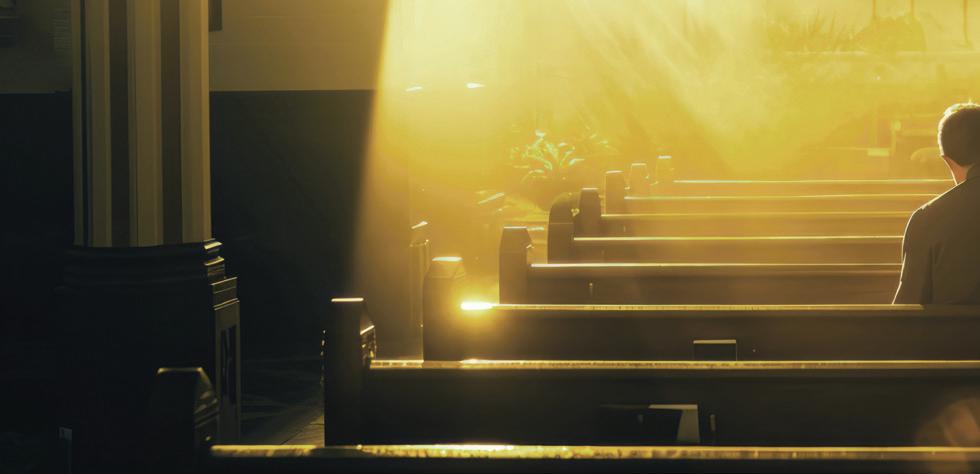
It is striking that Adam and Eve’s first full day was a day of rest, not work. What an impression of God this yields! The Bible offers a view of God entirely unlike the gods of any other ancient religion. Yes, Yahweh commanded humans to work, but also to rest every seventh day. Imagine the impression of the true God and the people who worshiped Him it would have given to the Akkadians, Egyptians, Phoenicians, and other ancient nations. This was a God who commands rest!
Truly the Sabbath is an amazing gift. But do we treasure it? Have you ever given a gift to someone and sensed they didn’t really appreciate or want it? God gave His human family the extraordinary gift of Sabbath time, yet we often don’t know how to receive it. Instead we reduce the Sabbath to rules and doctrinal rationales as did the ancient Pharisees, making the Sabbath another yoke of works—rather than joyfully receiving it and linking us to Jesus’ heart.
The blessed seventh day was not thought up by humans, nor is it earned by human effort or achievement. Neither is it a reward. Just like salvation, the Sabbath is an extraordinary gift! Instead of conferring merit with God, the Sabbath is the bond sealing us in His grace.
The Sabbath, established that first week in Eden (Gen. 2:1-3), was later revived for the slaves in Egypt before they reached Sinai (Ex. 16). Only there it was carved in stone by God’s fiery finger as the fourth of the Ten Commandments—a code of conduct for everyone, even the animals! It is the longest of the
commandments in the Decalogue, having approximately one third of all the words, presenting a rhythm of work and rest whereby all life may synchronize with the Creator.
“Remembering” the Sabbath richly connected with redemption. The narrative sequence in the book of Exodus illustrates this. The Old Testament ritual calendar began with Passover, the Lord providing instructions for celebrating it (Ex. 12:320): anyone “under the blood” could be saved. Fifty days later the children of Israel were at Sinai, where God spoke the law. This sequence is impressive! Deliverance from slavery (salvation) first and then the giving of the law!
More than maintaining a belief system, our goal is not just to have others keep the Sabbath and join our church. Rather, our goal is to invite others to share our relationship with Jesus—the Sabbath being a paramount way to deepen our fellowship with Him each week for a whole day, at His invitation!
The Jewish religious leaders in Jesus’ day were correctly adamant about the Sabbath day but they rejected Jesus—even though Old Testament prophets had often warned against exemplary worship that wasn’t coming from a heart linked with Yahweh. God finally rejected “their” Sabbaths, though they were worshiping on the right day (Hosea 2:9-11).
Jesus, in His “Sermon on the Mount,” declared that “doing the right thing” is not what sets apart the saved from the lost: “Many will say to Me in that day, ‘Lord, Lord, have we not prophesied in Your name, cast out demons in Your name, and done many wonders in Your name?’ And then I will declare to

them, ‘I never knew you; depart from Me, you who practice lawlessness!’ ” (Matt. 7:22, 23).
Earlier Isaiah had quoted God stating the same principle: “These people draw near with their mouths and honor Me with their lips, but have removed their hearts far from Me” (Isa. 29:13). Jesus quoted this very passage when speaking to the religious leaders of His time (Matt. 25:7-9).
Yes, we are commanded to keep the Sabbath! Think of the law of gravity in this respect. We need to obey gravity—it’s the law! Our belief or disbelief of it cannot invalidate it, change it, or make it disappear.
Just so with the Sabbath. The Sabbath law is like the law of gravity. Our feelings and opinions cannot change or eliminate it. We may choose to ignore the Sabbath, but it is dangerous to ignore reality—over the course of time our minds, hearts, bodies, and souls will pay a hefty price.
When we do accept the Sabbath, we will experience something incredible, because the need for Sabbath rest is built into us. In the New Testament Jesus stated that He is “Lord of the Sabbath” (Matt. 12:8) and that His rest will restore us. Sabbath restoration and healing are synonymous in God’s vocabulary. And when we accept holy rest, it is like reentering Eden, as Ellen White recalls, referring to the “blessed days of Eden when God pronounced all things ‘very good.’ Then marriage and the Sabbath had their origin, twin institutions for the glory of God in the benefit of humanity. . . . That which the eternal Father Himself had pronounced good was the law of highest blessing and development for man.”1
To be truly human, created in God’s image, includes the Sabbath!
Perhaps we could compare Sabbath rest to the “eye of the storm” in life’s hurricane. Our incessant striving can rest as we enter into God’s finished work! We can loosen our grim grip on work in a modern culture that less and less sees Sabbath as a welcome gift. Many don’t find it easy to cease working. Karl Barth is insightful: “On this day we are to celebrate, rejoice, and be free, to the glory of God. . . . We must hear the Gospel before we can understand the law. . . . We can’t value and do justice to work except in the light of its boundary, its solemn interruption—the true time from which alone we can have other work time.” 2
The Sabbath and the gospel proclaim the same thing! We don’t work to get rewarded with the Sabbath. God is not a tyrant, and we are not His slaves. Rather, we are commanded to rest with God and accept His gift. The psalmist referred to this principle when describing Israel’s sanctuary worship commencing in the wilderness: “For there the Lord commanded the blessing—life evermore” (Ps. 133:3).
Christians don’t usually talk about their favorite commandment, because commands are not often welcome! The Decalogue commands us to remember the Sabbath. And Moses teaches that God commands blessings! The prophet Isaiah quoted God urging us to call the Sabbath a “delight” (Isa. 58:13).
The glory of Sabbath time also points to the goodness of creation. Martin Luther saw this, writing: “God writes the Gospel not in the Bible alone, but also on trees, and in the flowers and clouds and stars.”3 Each Sabbath can heighten our appreciation for the wider community of life we share this planet with—a weekly opportunity to treasure these bonds. Accepting Sabbath rest, we share the blessing of rest with animals and even the earth. Jesus’ parables taught this, as Ellen White writes: “Christ’s purpose in parable teaching was in direct line with the purpose of the Sabbath. God gave to men the memorial of His creative power, that they might discern Him in the works
It is an intentional time for God to restore our souls.
of His hand. The Sabbath bids us behold in His created works the glory of the Creator. And it was because He desired us to do this that Jesus bound up His precious lessons with the beauty of natural things. On the holy rest day, above all other days, we should study the messages that God has written for us in nature.”4
Think of the benefits animals and the earth could receive if everyone rested on the Sabbath— the Lord promising to heal our broken hearts and damaged souls with nature’s assistance! The healing benefits of nature are increasingly appreciated.5 Ellen White alluded to this, writing, “There is healing in the pines.”6
All our choices of what or what not to do on the Sabbath should guard precious fellowship with Jesus—not letting anything interfere. In a world unrelenting in its distractions and pressures, Sabbath hours grant time for resting in Jesus plus opening time and space in God’s “very good” creation. Jesus is the gracious antidote to the cheerless rule-keeping often connected with the Sabbath.
It is not that we don’t love Jesus. We just don’t know how to be around Him. We know Jesus is the Creator—and we can be very busy working, even working for Him, and miss fellowship with Him. Sabbath gives us time to hear His heartbeat and find “rest for [our] souls” (Matt. 11:29). When we allow ourselves to enter into Sabbath’s holy rest, it is like reentering Eden. As Ellen White writes: “There were two institutions founded in Eden that were not lost in the fall—the Sabbath and the marriage relation. These were carried by man beyond the gates of paradise.”7 “God gave the Sabbath as a memorial of His creative power and works. . . . He made its observance obligatory upon man, in order that he might contemplate the works of God, dwell upon His goodness, His mercy, and love, and through nature look up to nature’s God. If man had always observed the Sabbath, there would never have been an unbeliever, and infidel, or an atheist in the world.”8
“Remembering” the seventh day is more than obeying a commandment. Rather, it is receiving soul rest in and with the Creator, who is also our Savior.
This is the heart of the matter: divine fellowship and rest, which can inspire better relationships with each other and the world. It is an intentional time for God to restore our souls—God promising that the Sabbath is the sign that He is sanctifying us! (Ex. 31:13).
The Sabbath is so rich theologically. It is an ancient practice, yet ever new, offering an invitation to a unique way of living in this world. Keeping the Sabbath is life changing, potentially counteracting worry and stress each week, connecting us more deeply with Jesus—and others. It guards social justice with daughters and female servants and animals specifically mentioned in the fourth commandment.
Instead of a day of boredom to be endured as a sign of being good, it is God’s desire to bestow grace. It is the blessed rhythm of time—part of the promised “abundant life” (see John 10:10). Each Sabbath “thus says the Lord God, the Holy One of Israel: ‘In returning and rest you shall be saved; In quietness and confidence shall be your strength’ ” (Isa. 30:15).
1 Ellen G. White, The Adventist Home (Nashville: Southern Pub. Assn., 1952), p. 341.
2 Karl Barth, Church Dogmatics, vol. 3, part 4.
3 Quoted in Mrs. Andrew Charles, “Hearth and Home,” in The Lutheran Witness, ed. Martin J. Heinicke (St. Louis: Concordia, 1917). John Calvin was also convinced: “We cannot be excused when we have not at all considered God in His works. He does not at all leave Himself without witness here. . . . Let us then only open our eyes and we will have enough arguments for the grandeur of God, so that we may learn to honor Him as He deserves” (cited by Tri Robinson with Jason Chatraw in Saving God’s Green Earth: Rediscovering the Church’s Responsibility to Environmental Stewardship [Garden City, Idaho: Ampelon Publishing, 2006], p. 87.
4 Ellen G. White, Christ’s Object Lessons (Washington, D.C.: Review and Herald Pub. Assn., 1900, 1941), pp. 25, 26.
5 See such books as Forest Therapy (Sarah Ivens, Forest Therapy: Seasonal Ways to Embrace Nature for a Happier You [Boston: Da Capo Lifelong Books, 2018]) and The Hidden Lives of Trees (Peter Wohlleben, The Hidden Life of Trees [Vancouver, B.C.: Greystone Books, 2016]).
6 “While negotiations for the Madison property were under way, Ellen White and her party left on Wednesday, June 15, for a weeklong tour of several institutions in Tennessee and Alabama. The first was Graysville, where there was a school and a sanitarium. On Sabbath she spoke in the church and noticed that there were in her audience three ministers from other Protestant churches. On Sunday she made a grand tour of the school buildings, the farm—where she discovered peaches and corn and strawberries— and the sanitarium, where she urged that the pine trees be preserved, for there is healing in the pines” (Arthur L. White, Ellen White: Woman of Vision [Hagerstown, Md.: Review and Herald Pub. Assn., 2000), p. 454.
7 Ellen G. White, in Signs of the Times, Feb. 28, 1884.
8 Ellen G. White, in Signs of the Times, Feb. 13, 1896.
Jo Ann Davidson is a senior research professor of systematic theology at the Seventh-day Adventist Theological Seminary, Andrews University, Berrien Springs, Michigan.

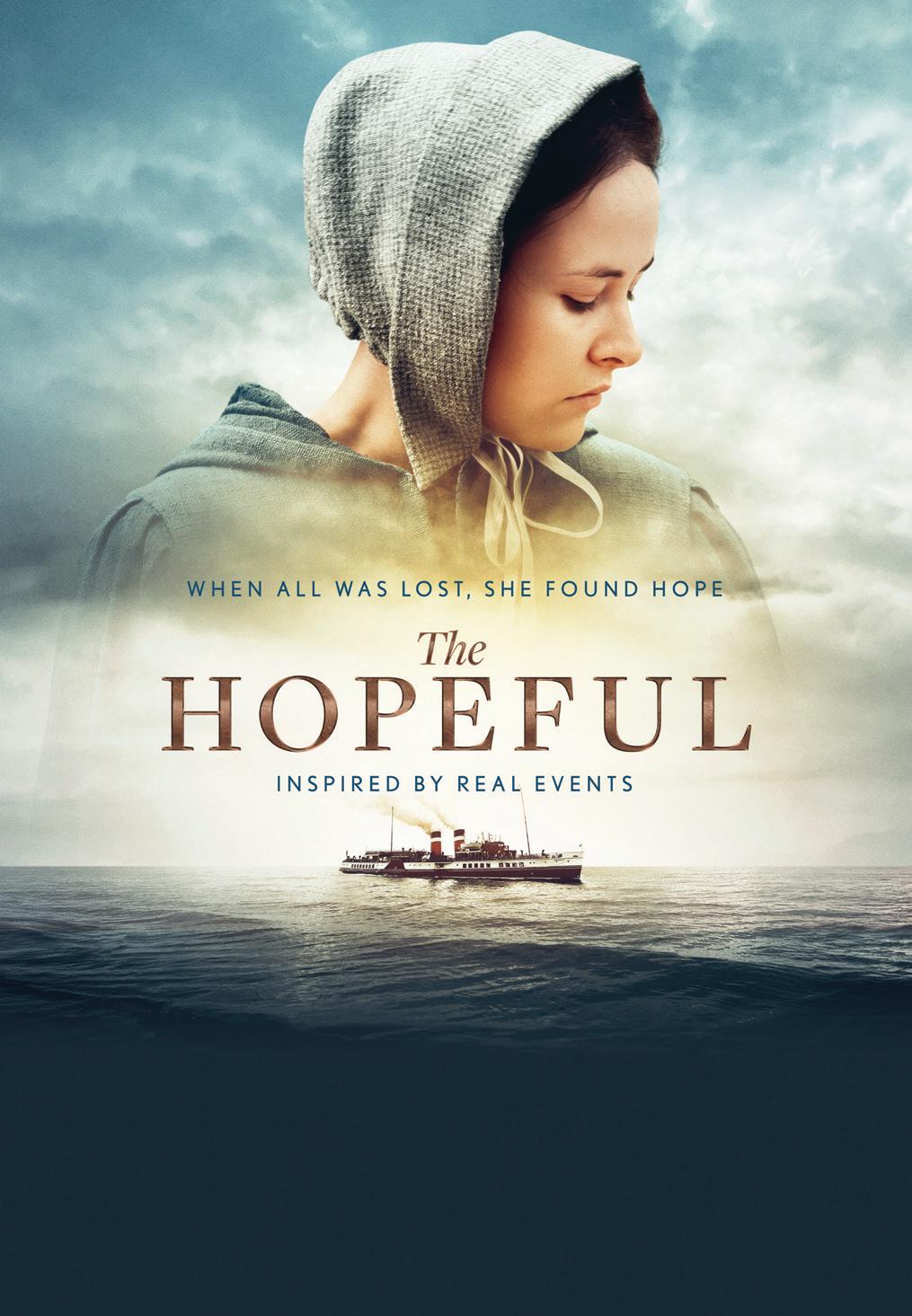


In Genesis 2:7 we are told that “the Lord God formed man of the dust of the ground.” The dust mentioned here is simply mud or clay. Since God planned to create humans in His image, why didn’t He use the finest gold, precious rubies, or some sturdier material? He certainly could have used anything—but He chose clay.
Perhaps one reason was clay’s ability to be molded and formed into diverse structures. When appropriate pressure or heat is applied, it can be soft or hard. It can be pliable like plastic or firm like rock. Clay gains these various properties through chemical and physical changes that determine the product’s final use, such as weather-resistant building material, fine porcelain bowls, or even paper. The human body would necessarily require material that has broad use when we consider the countless types of cells, tendons, molecules, muscles, etc., that comprise it.
Human life is significantly more complex than the clay from which we were made. Consequently, we have a large variety of sources of stress that impact our lives. These include work or family situations, financial and economic needs, interpersonal relationships, health and biological factors, environmental factors, political or societal unrest, and factors about ourselves (lack of control, perfectionism, negative self-talk, etc.).
Stress is a normal part of life. Stress is what happens when a new child comes into the world. Stress is present when that child learns to crawl, walk, and finally run. The processes that cause their tiny
feet to grow and build muscle are considered a form of stress on the body.
Then, as they establish relationships with various family members or begin reaching out to form friendships outside the family circle, it takes emotional and mental exertions— all forms of neurological stress—to learn how to appropriately relate to different people who may come from very different backgrounds.
Considering the incredible number of biological and psychological changes a human undergoes throughout a lifetime, we can say that our human bodies— though formed from clay—are built to endure incredible stress. Why is it, then, that so much of what we experience as stress feels much more negative? Why do we often feel more overwhelmed than empowered? And why is it that our bodies can physically break down as a result of these experiences?
Let’s consider clay once again. For pottery or brick to be usable and durable, it needs to be fired by exposure to high temperatures. Depending on the type of clay and the desired end product, firing is done in stages with increasing heat. For example, making porcelain requires two rounds of prolonged firing with heat ranging from 392°F to 1,832°F (200°C to 1,000 C). The process also removes impurities. Too much heat, however, can lead to cracks, splitting, or burning. Interestingly, underfired clay can lead to insufficient processing and results in a vessel prone to mold, foul tastes, and odors.

(according to Nixon P. Practioner [1979], R. M. Yerkes, and J. D. Dodson [1908]).
The “human function curve” similarly demonstrates that the right balance of stress is important for optimal human growth and function. In this model that is often depicted as a “bell curve,” our mental and physical abilities increase in proportion to the amount of stress we are experiencing.1 Preparing for an exam, for example, may cause us to focus more as we get closer to the exam date. There is typically a “comfort zone,” where we perform at a relatively high level under significant stress. This is the balance we want to achieve. If our stress levels are too low, we may feel frustrated, bored, or dissatisfied with our situation. But past the comfort zone, if stress continues to increase, we will not be able to maintain our mental and physical abilities, and we can quickly sink into fatigue and exhaustion. Continued high levels of stress will eventually manifest in health problems, we reach burnout, and our body and brain functions begin to fall apart.
This is because being overstressed for prolonged periods, also known as chronic stress, can lead to the breakdown of all major systems of the body. The American Psychological Association gives an excellent summary of the impact on the musculoskeletal, respiratory, cardiovascular, endocrine, gastrointestinal, nervous, and reproductive systems of the body.2 In other words, everything from brain to belly to bone is affected by stress, and a constant state of stress leads to unavoidable damage, as we explore next.
It’s impossible to avoid the impact of chronic stress on the brain because it is actively involved during times of stress, including acute (temporary), chronic (long-term), and traumatic stress. Through a system known as the hypothalamic-pituitary-adrenal (HPA) axis, the hypothalamus region of the brain stimulates the pituitary (located just below the brain), which then signals the adrenal glands to produce cortisol—often called the “stress hormone.”
Cortisol helps your body regulate various functions throughout the day, including immunity, blood pressure, blood sugar, and
knew what He was doing when He formed us from clay.
sleep. Chronic stress can lead to consistently high levels of cortisol in the body, which decreases the ability of the HPA axis to calm down to “normal” levels. This leads to a higher risk for immune dysfunction, emotional and behavioral problems such as depression and anxiety, and cancer, diabetes, and obesity.
The brain also plays a part in how stress affects our belly, or gut. Numerous nerves physically connect the brain and digestive system, allowing for constant communication between the two. The walls and linings of our intestinal tract can be compromised because of high stress or the associated inflammation, which can impact the gut-brain connection. Additionally, bacteria, viruses, and fungi that live in our gut require a healthy balance that can be offset because of the compromised gut lining or the hormones produced by immune cells to combat chronic stress.
Chronic stress is also associated with osteoporosis—a condition of weak and brittle bones. Our bones are constantly undergoing a dynamic process of remodeling in response to various hormones, availability of specific nutrients, and weight-bearing exercise. This process keeps the bones healthy. When exposed to psychological stress, however, the rebuilding process is inhibited. Long-term stress can, therefore, lead to brittle bones as the result of the inadequate replacement of bone cells.
These are only some of the complex biological pathways that are negatively affected by chronic stress. Many of these problems may go unnoticed until we are well past the “comfort zone” identified in the human function curve. This zone is unique to each one of us. We need to measure and moderate the endless hurry we allow in our lives, and intentionally seek balance if we wish to avoid long-term casualties. We need to learn from the careful potter who keeps a close watch on the vessel they are forming so that the stress applied does not overwhelm the raw material, rendering it unusable.
Stress is inevitable, but it doesn’t have to be destructive. Consider how you can use the following to thrive through the firing process:
Gut feelings. Reoccurring diarrhea, constipation, bloating, gas, pain, and appetite changes can indicate possible problems with your digestive system. Take note when these happen and what may be triggers, such as specific foods, drinks, or emotionally disturbing situations.
Happy food. Everyone’s body reacts to food— either positively or negatively. Include more whole plant foods, such as beans, fruits, vegetables, nuts, and seeds, to promote a healthier gut. A dietitian can also help determine if supplements are needed to support recovery from stress-induced damage.
Schedule rest. Consider how reenergized you feel after sleep or a period of rest. If you do not feel refreshed, identify why you did not get adequate rest, then pinpoint one or two small changes you could reasonably make. Is there an optional activity you can remove from your schedule to make room for wholesome rest?
Seek support. Find others who can support your recovery, whether family, friends, or a community-based support group. If you have an underlying health condition or experience significant symptoms, seek medical care to help your brain and body return to a place of peace.
Gain strength. Pick a positive attribute about yourself to strengthen. Spend time building and enjoying your God-given abilities, sharing them with others when possible.
Finally, watch the Potter. God knew what He was doing when He formed us from clay. He tenderly watches as we are “fired” in the furnace of life. He knows our frame, remembers that we are from dust, and can make us into refined vessels filled with heavenly treasure. Ultimately, this is the purpose for the pressures, perplexity, and persecution that afflict us (2 Cor. 4:7-9). Fixing our eyes on our Maker will shape our scope of view, give us hope that endures, and help us cope with grace.
1 Lolita Rapoliene, Artūras Razbadauskas, Antanas Jurgelénas, “The Reduction of Distress Using Therapeutic Geothermal Water Procedures in a Randomized Controlled Clinical Trial,” Mar. 19, 2015 (full article may be accessed at https://pmc.ncbi.nlm.nih. gov/articles/PMC4383502/).
2 American Psychological Association, “Stress Effects on the Body,” Nov. 1, 2018, retrieved from https://www.apa.org/topics/stress/body.
Angeline D. Brauer, Dr.P.H., M.H.S., R.D.N., has served as the Health Ministries director for the North American Division of Seventh-day Adventists since 2016.
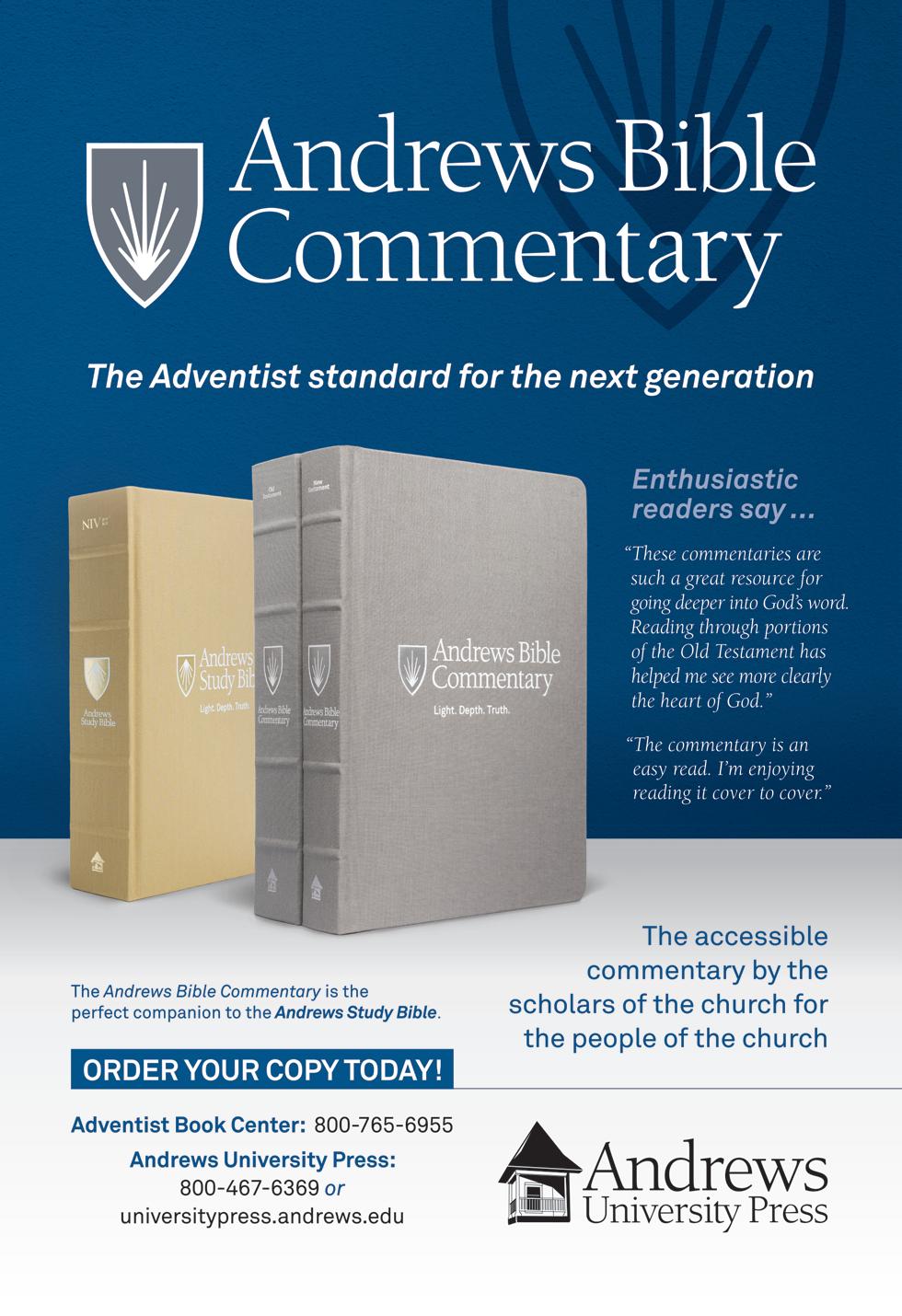


Iknow someone who calls themselves “fast”—not in an immoral way, but in a literal sense. This person prides themselves on efficiency, constantly finding ways to do things as swiftly as possible. They’ve mastered their daily commute, always knowing which lanes move fastest at any given time. Whether picking a line at the store or calculating routes on Google Maps, they’re constantly optimizing for speed. They eat fast, walk fast, talk fast, work fast, and if something can be sped up—especially anything they listen to—it’s set to 2x speed, minimum. (I’ll admit, I’m with them on that last one.)
I’m all for productivity, but sometimes I wonder if we’ve lost something valuable in our culture’s pursuit of speed and efficiency. In our haste we miss out on a slower, more intentional way of life—a life that in many ways has more room for meaning and connection. This “slow life” has always intrigued me. My fascination began years ago when I started waking up before dawn and experiencing the stillness of the early morning. It felt like a gift, a time to be fully present without the pressures to hurry. As responsibilities grew, however, from work to raising a family, that slower pace began to feel like a luxury I could not afford.
The pressures of life and family often push us into survival mode, and for a time this was my reality. The idea of slowing down seemed unrealistic. Now, coming out of the holiday season, and as winter’s quiet calls for rest, I’m reminded again of how valuable it is to pause, reflect, and savor life’s simple moments.
Research shows that slowing down is essential for our health. Studies highlight how taking time for reflection, connection, and rest significantly benefits adults and children alike. As a parent, I’ve seen how these pauses strengthen my relationships, reduce stress, and even encourage creativity. Yet how do we find this space for a slower, more intentional life in a world that’s always “on”?
In our fast-paced world it’s easy for families to fall into a rhythm of rushing from one commitment to another. But intentionally slowing down together can create cherished memories, strengthen relationships, and foster a more meaningful life. How do we make space for a slower, more intentional
I’m all for productivity, but sometimes I wonder if we’ve lost something valuable in our culture’s pursuit of speed and efficiency.
life amid busy schedules—especially as added pressures of extracurriculars and other appointments start to pile on? I love that we have the Sabbath built in for this purpose, but here are some other practical ways families can slow down and connect.
Spending time in nature isn’t just a chance to relax; it’s an experience that can draw us closer to each other and to our Creator. Plan regular family outings in nature, whether it’s a park, forest, or beach. Have a picnic, hike, or simply exist together, taking in the plants, animals, and scenery. Observing God’s creation together can spark awe, creativity, and gratitude while giving everyone a break from daily pressures.
Gratitude and reflection don’t just improve our individual outlook; they also strengthen family bonds. Set aside time each week to come together as a family and share what you’re thankful for, perhaps by going around the dinner table or keeping a family gratitude journal in which everyone can jot down their blessings. Add moments of reflection by discussing the week’s experiences, goals, and challenges. These times create space for each family member to feel valued and heard, fostering open dialogue, empathy, and a deeper sense of connection. Focusing on the positives and reflecting on life’s moments together can help everyone cultivate contentment and truly be present.
Simple family traditions—such as Sunday morning pancakes, Thursday night board games, or weekly craft projects—can naturally slow down time, helping everyone look forward to and savor moments together. Consider some traditions that don’t involve screens, such as storytelling, puzzles, or drawing. Being fully present with each other without digital distractions helps create fond memories and connections that last.
It is so easy to forget the power of simply pausing, especially when loved ones are calling for our attention. It can be tempting, as parents, to keep pushing forward with daily mundane tasks that need to be done, but sometimes the most meaningful choice is to stop, look up, and be present. Agreeing to pause—even briefly—allows us to take in the moment fully. The to-do list can wait; what can’t wait is the chance to connect with our children or loved ones right now. Choosing to stop and be present creates an atmosphere of warmth and availability that children cherish and remember, reminding them (and us) that they are seen, heard, and valued!
Instead of giving in to the urge to rush through bedtime, create a ritual that feels slow and comforting. This might include worship and prayer and sharing highlights of the day. Slowing down at bedtime can help children unwind, feel secure, and recognize the importance of ending the day with peace and connection.
While God calls us to meaningful work and purpose, I don’t believe He intends for us to live in constant stress. The idea of family was woven into Creation, and it is essential to protect the quality of time we spend together. Jesus Himself modeled this way of life—despite His important mission, He took time to rest, connect, and pray. He was never in a rush. Whether sitting down to share a meal, resting at a well, or even taking a nap, Jesus showed us that slowing down has value.
Slowing down can feel countercultural in a world that equates speed with success. But perhaps that’s why it’s so necessary. Living a slower life as a family is not about abandoning our responsibilities, but about making intentional choices that nurture our relationships. By creating space for rest, connection, and reflection, we can cultivate a life rich with meaning and a firm family foundation. Each day is a gift, and by choosing to slow down, we invite God to reveal the beauty in the present moment and strengthen our connection with Him and each other.
His words were like an icy hand casually slapping my slack-jawed face. I had just finished addressing 300 teachers on the topics of excellence and Adventist mission. No sooner had I sat down than the next seminar presenter stood and began speaking, and the first words out of his mouth were something like this: “The local congregation has its place, its own sphere. It is often the scene of action, of mission lived out among the masses. But the university? The university is where the church does its thinking.”
I was stunned. What brand of errant bombast was this? The implication seemed as clear as it was pretentious: At the university—perhaps in academia in general—scholars contemplate, they sagely consider, they engage in genuine thinking. But at the local church? Well, the proletariat never was much for sophisticated reflection, was it? Let the plebs hold their vulgar prophecy seminars while the elevated gentry engage in the far more serious pursuit of ever-deepening erudition.
Years later, as I’ve reflected on that speaker’s comments, I’ve realized it is possible he had no pejorative intent. He may instead have merely been making an off-the-cuff reference that would have raised zero eyebrows in his professional circles. Moreover, it is clear his assertion does have at least a smidge of merit. It is undeniable, for instance, that for centuries, religious entities have established schools of higher learning in hopes of endowing clergy with intellectual chops equal to the philosophical perils running rampant in local churches.
So today, is the phrase then still true? Is the university still where the church
does its thinking? The answer clearly is . . . maybe! And what causes that variability is a story for another day in a longer article. But until then, consider the following:
1. Wisdom is not inseparable from academic prowess. I know some very wise academics. It’s also true that some of the wisest people in the church today never went to college, and I am glad they are key leaders in their local congregations. “Wisdom is supreme,” Proverbs 4:7 tells us, “so acquire wisdom” (NET),* and that acquisition does not require an advanced degree.
2. Universities have often saved the church from disaster. One of the many lessons gleaned from the Protestant Reformation is that academic study, rightly leveraged, can yield impactful results. Martin Luther prevailed over Pope Leo X by the power of the Holy Spirit . . . and by a towering command of Latin, biblical exegesis, and canon law. Academic learning thus really did help in the triumph over pagan mysticism, without which you might not be reading these words today.

IS THE UNIVERSITY WHERE THE CHURCH DOES ITS THINKING?
3. Great thinking is happening in local churches and Adventist universities alike, thinking that ultimately comes from the mind of God. Degreed or not, none of us creates knowledge; we merely discover what God has been thinking all along. Arrogance thus has no place in the sanctuary or the classroom. May the layman and the professor serve each other accordingly.
* Scripture quotations credited to NET are from the New English Translation Bible, copyright © 1996-2025 by Biblical Studies, L.L.C. All rights reserved.
Shane Anderson is the lead pastor of Pioneer Memorial church on the campus of Andrews University in Berrien Springs, Michigan.
Glory, when all our labors and trials are over

If any man’s work abide, . . . He shall receive a reward” (1 Cor. 3:14). Glorious will be the reward bestowed when the faithful workers gather about the throne of God and of the Lamb. When John in his mortal state beheld the glory of God, he fell as one dead: he was not able to endure the sight. But when the children of God shall have put on immortality, they will “see him as he is” (1 John 3:2). They will stand before the throne, accepted in the Beloved. All their sins have been blotted out, all their transgressions borne away. Now they can look upon the undimmed glory of the throne of God. They have been partakers with Christ in His sufferings, they have been workers together with Him in the plan of redemption, and they are partakers with Him in the joy of seeing souls saved in the kingdom of God, there to praise God through all eternity.
My brother, my sister, I urge you to prepare for the coming of Christ in the clouds of heaven. Day by day cast the love of the world out of your hearts. Understand by experience what it means to have fellowship with Christ. Prepare for the Judgment, that when Christ shall come, to be admired in all them that believe, you may be among those who will meet Him in peace. In that day the redeemed will shine forth in the glory of the Father and the Son. The
angels, touching their golden harps, will welcome the King and His trophies of victory—those who have been washed and made white in the blood of the Lamb. A song of triumph will peal forth, filling all heaven. Christ has conquered. He enters the heavenly courts, accompanied by His redeemed ones, the witnesses that His mission of suffering and sacrifice has not been in vain.
The resurrection and ascension of our Lord is a sure evidence of the triumph of the saints of God over death and the grave, and a pledge that heaven is open to those who wash their robes of character and make them white in the blood of the Lamb. Jesus ascended to the Father as a representative of the human race, and God will bring those who reflect His image to behold and share with Him His glory.
There are homes for the pilgrims of earth. There are robes for the righteous, with crowns of glory and palms of victory. All that has perplexed us in the providences of God will in the world to come be made plain. The things hard to be understood will then find explanation. The mysteries of grace will unfold before us. Where our finite minds discovered only confusion and broken promises, we shall see the most perfect and beautiful harmony. We shall know that infinite love ordered the experiences that seemed most trying. As we realize the tender care of Him who makes all things work together for our good, we shall rejoice with joy unspeakable and full of glory.
Pain cannot exist in the atmosphere of heaven. In the home of the redeemed, there will be no tears, no funeral trains, no badges of mourning. “The inhabitant shall not say, I am sick: the people that dwell therein shall be forgiven their iniquity” (Isa. 33:24). One rich tide of happiness will flow and deepen as eternity rolls on.
We are still amidst the shadows and turmoil of earthly activities. Let us consider most earnestly the blessed hereafter. Let our faith pierce through every cloud of darkness, and behold Him who died for the sins of the world. He has opened the gates of Paradise to all who receive and believe on Him. To them He gives power to become the sons and daughters of God. Let the afflictions which pain us so grievously become instructive lessons, teaching us to press forward toward the mark of the prize
He has opened the gates of Paradise to all who receive and believe on Him.
of our high calling in Christ. Let us be encouraged by the thought that the Lord is soon to come. Let this hope gladden our hearts. “Yet a little while, and He that shall come will come, and will not tarry” (Heb. 10:37). Blessed are those servants who, when their Lord comes, shall be found watching.
We are homeward bound. He who loved us so much as to die for us hath builded for us a city. The New Jerusalem is our place of rest. There will be no sadness in the city of God. No wail of sorrow, no dirge of crushed hopes and buried affections, will evermore be heard. Soon the garments of heaviness will be changed for the wedding garment. Soon we shall witness the coronation of our King. Those whose lives have been hidden with Christ, those who on this earth have fought the good fight of faith, will shine forth with the Redeemer’s glory in the kingdom of God. It will not be long till we shall see Him in whom our hopes of eternal life are centered. And in His presence, all the trials and sufferings of this life will be as nothingness. “Cast not away therefore your confidence, which hath great recompence of reward. For ye have need of patience, that, after ye have done the will of God, ye might receive the promise. For yet a little while, and he that shall come will come, and will not tarry” (Heb. 10:35-37).
Look up, look up, and let your faith continually increase. Let this faith guide you along the narrow path that leads through the gates of the city of God into the great beyond, the wide, unbounded future of glory that is for the redeemed. “Be patient therefore, brethren, unto the coming of the Lord. Behold, the husbandman waiteth for the precious fruit of the earth, and hath long patience for it, until he receive the early and latter rain. Be ye also patient; stablish your hearts: for the coming of the Lord draweth nigh” (James 5:7, 8).
Seventh-day Adventist believe that Ellen G. White 1827-1915 exercised the biblical gift of prophecy during more than 70 years of public ministry. This excerpt was taken from Christian Experience and Teachings, pp. 233-236.


Afew years ago I was in England to study English. On the occasion of a visit to a London bookstore, I remember being attracted by the title of a book, which also became a bestseller: All I Really Need to Know I Learned in Kindergarten. 1 The thesis or basic truth of its author, the eclectic Robert Fulghum, is short and simple: what is really essential for life is not learned at university but, paradoxically, in kindergarten, starting from the very first relationships, from the confrontation with others. After all, what counts and is essential for living is not so complicated. Even the wellknown Italian journalist Enzo Biagi liked to repeat in a proverbial tone: “The truths that count, the great principles, in the end, always remain two or three. They are the ones your mother taught you as a child.” It is legitimate, therefore, to wonder whether the same paradox does not also apply to the Christian experience. What is the essence of faith, beyond all the accessories that risk weighing it down?
In the search for a faith that is essential and simple but not simplistic, we begin with the story of our origins—the “kindergarten” where God the Creator meets and relates to His creature and the human being taking his first steps. From this starting point we can discern two or three great ideas, two or three truths about God, life, and the bond that unites them.
Faced with the question of what is God’s first commandment given to humankind according to the Bible (apart from the imperative “Be fruitful and multiply” [Gen. 1:28]), many believers instinctively answer, “Do not eat the fruit of the tree.” But this answer is a partial and misleading summary of God’s visage and His words.
The purpose of the God of the Bible, Savior and Lord of life, is not to clip the wings of His children, but to train them to fly toward horizons of meaning, freedom, and lasting happiness.
In fact, God’s first commandment to humankind does not begin with a command about what not to eat, but with a fascinating invitation to life, a true and convinced yes to a full life: “And the Lord God commanded the man, saying, ‘Of every tree of the garden you may freely eat; but of the tree of the knowledge of good and evil you shall not eat, for in the day that you eat of it you shall surely die’ ” (Gen. 2:16, 17).
Here we find not a God who denies something good to the human being, but a God who creates life, beauty, and well-being, for the happiness and pleasure of the human being. Nevertheless, even believers often perceive God’s visage in dark colors. This is evident, for example, for many young Adventists, as seen in a humorous strip by Gianluca Biscalchin that appeared in the youth Italian monthly L’Opinione with the evocative title “The Law First!”
In this strip four religious leaders appear in four vignettes: a priest, a rabbi, an imam, and an Adventist pastor with the following respective statements:
1. “It is nice to be a Catholic because premarital intercourse is forbidden.”
2. “It is nice to be a Jew because it is forbidden to do anything on Sabbath.”
We can find embedded in Genesis 2 itself truths that are useful for building and nurturing our relationship of faith, or trust, with God in a more positive manner.

3. “It is nice to be a Muslim because it is forbidden to drink alcohol and eat pork.”
4. “But being an Adventist is even nicer because a little bit of everything is forbidden!”
The law first! It is true, this is how God is sometimes perceived, as a great and gigantic NO, as a living and permanent prohibition, as a threat to human freedom. Faith, therefore, if understood in this way, is no longer a relief, a source of life and liberation, but might be perceived as a narrow cage, a cramped prison. If God’s law and commandments are no longer understood in the context of relationship, such might be perceived by some as cold, oppressive, and painful norms.
Yet we can find embedded in Genesis 2 itself truths that are useful for building and nurturing our relationship of faith, or trust, with God in a more positive manner. Here are three ideas starting from a careful reading of Genesis 2:16, 17, a sort of elementary ABC to (re)discovering another visage of God, another way of understanding His will for good for every human being.
As has already been mentioned, God’s commandment begins with these surprising words: “Of every tree of the garden you may freely eat” (Gen. 2:16). That is to say, enjoy life, take joy from life and all creation. 2 It is nice to think that God takes care of human beings by inviting them to eat. Is there anything more pleasurable and more essential? This invitation reminds me a lot of the expression of joy and amazement of my son Federico, at the age of 3, sitting on the shopping trolley in a large supermarket and with his arms outstretched, almost as if he wanted to grasp all the array of colors and variety shining in his innocent eyes. Here, then, is the visage of God in Eden, not a sad and avaricious tyrant, but a generous Father who ignites desire, the discovery of an authentic life. For the God of creation, the happiness and joy of His creatures is almost a duty.
The second part of God’s commandment, “but of the tree of the knowledge of good and evil you
shall not eat” (verse 17) sounds, consequently, not as a subtraction of freedom but as a guarantee of it. As an invitation to recognize the limits of freedom, without which even freedom can quickly turn into delirium and a sum of deplorable slavery.
The intangibility of “the tree of the knowledge of good and evil” does not therefore derive from a capricious god, but is the very sign of human limitation. He or she who does not know and recognize his or her limits is destined, sooner or later, to get hurt. Despite the advertising slogan of a well-known watch (“No Limits. No Limits. No Limits.”) that may still sound particularly seductive to young people, real-life experience confirms that exactly the opposite is true. Living without limits is not only illusory but also dangerous: it creates, not life, but chaos and anarchy. It must be acknowledged, with Asha Phillips (a child psychotherapist), that there are some noes that help one to grow, and this also applies to the experience of faith.3
In the last part of this exemplary commandment, “for in the day that you eat of it you shall surely die” (verse 17), God calls every human being, every believer, to weigh the consequences of their choices for good and evil, to take full responsibility for their actions. This too must have been on the apostle Paul’s mind when he wrote to the Galatians, “Do not be deceived, God is not mocked; for whatever a man sows, that he will also reap” (Gal. 6:7). Of course, there are no mechanisms valid always and in every case, but responsible action must accompany every human being on the demanding path of freedom. Not least because the true essence of freedom “is man’s ability to surpass himself, even to act against his inclinations and in defiance of his own needs and desires. . . . Freedom is liberation from the tyranny of the self-centered ego.” 4
In a nutshell, the theological dynamic present in the Garden of Eden (Gen. 2:16, 17), as well as
in the prologue of the Decalogue (Ex. 20:1, 2; cf. Deut. 6:20-25), also articulates in a significant and exemplary way the dialectic of grace and law, of gift and commandment:
“The divine commandment is based on grace: God gives man his being, He communicates to him His own life-breath; He pampers him by placing him in a garden of delights, and then begins his education. Similarly, in His Word, God first evokes the gift He has given, ‘You shall eat of every tree,’ and then introduces the limit to be observed: ‘You shall not eat of the tree of the knowledge of good and evil.’ This approach prefigures that of the gift of the law at Sinai. God brought His people out of slavery, set them free, and now He gives them His commandments. Similarly, in His Word, the memory of the gift precedes the obligation of the law: ‘I am the Lord your God who brought you out of Egypt. You shall have no other gods.’ ” 5
The manifestation of grace, therefore, comes first and grounds the ethical imperative. The opposite is not equally true and possible. It is the love of God that creates for us the conditions for loving in our turn. “We love Him because He first loved us” (1 John 4:19). For this reason the purpose of the God of the Bible, Savior and Lord of life, is not to clip the wings of His children, but to train them to fly toward horizons of meaning, freedom, and lasting happiness. A true happiness that transcends the immediate pleasure, which goes beyond the reductive contemporary mantra “life is now.” For God’s yeses for our well-being are far more numerous than his noes to protect us, even from ourselves.
1 Robert Fulghum, All I Really Need to Know I Learned in Kindergarten (New York: Villard Books, 1988).
2 See also the New International Version, which reads: “You are free to eat of any tree in the garden” (Gen. 2:16).
3 See Asha Phillips, Saying No: Why It’s Important for You and Your Child (London: Faber and Faber Limited, 1999).
4 Abraham J. Heschel, The Insecurity of Freedom. Essays on Human Essence (New York: Farrar, Straus and Giroux, 1966), pp. 14, 15.
5 Jan Joosten, “Que s’est-il passé au jardin d’Eden?” in Revue de Sciences Religieuses 86 (2012): 495, 496 (translation and emphasis by the author of this article).
Filippo Alma, Ph.D., is an Adventist pastor and professor of theology at the Italian Adventist University Villa Aurora, Florence, Italy.
unpleasant tale

When I was a practicing doctor, my working day started with an assistant handing me a list of the patients for the day. I would peruse the list to see who might be coming in to see me. Some patients’ names evoked pleasure and happy anticipation. Others, I may not have known or have had any emotional feelings about. But there were a few who would send a shutter down my spine and an immediate sense of gloom. Mr. Ferguson fell into this category. And there he was, on my schedule: George Ferguson, 10:30 a.m. “Follow-up.” I just shook my head and sighed.
I kept one eye on the clock ticking down toward 10:30 as I worked my way through my patient list, knowing that disaster was just around the corner.
Mr. Ferguson was a 93-year-old man with advanced Alzheimer’s who had no close family and lived alone in a nursing home nearby. He was afflicted with a squamous cell carcinoma of his left ear, which, because of chronic neglect, had by now become unresectable. And just as the clock was ticking down for me, it was ticking down for Mr. Ferguson as well. It was only a matter of time before the cancer would erode through his temporal bone into his brain tissue, ending his life.
At 10:25 I could hear them coming in. His nursing home assistant clumsily wheeled him through our front door, bumping and clanking

their way into our waiting room. He was slumped over in his wheelchair, and his head bobbed as the wobbly chair moved along, spittle dribbling down from the side of his mouth onto his neck. He was moaning and jabbering in his demented state.
The well-dressed ladies and gentlemen in the waiting room shifted in their chairs and peeked over their magazines and Wall Street Journal copies to see what the commotion was about, and then quickly averted their gazes so as not to seem obvious. And then, like a grotesque aftershock, a wave of foul, putrid odor filled the room, along with a sense of dread among the other waiting patients. The front desk whis -
JACOB WACKERHAUSEN
Do you ever wish that you could go back in time and do some things differently? I do.
pered, “Hurry up! Get him back, get him back.” And the assistant continued, pushing the wobbly wheelchair down our long corridor toward the examination rooms.
“Doctor Mashburn, he’s here.” They didn’t really need to call me. I knew he was there. I had heard him coming in and had already caught a drift of that terrible stench. I steeled my nerves, put on a mask and gloves, and somberly made my way into his exam room. I didn’t bother talking to him. I knew he didn’t know what was going on. He was slumped over in his wheelchair, his head wrapped, somewhat unprofessionally, with a gauze dressing. The dressing was crusted and stained with old and new blood and secretions, and disheveled, almost ready to fall off on its own.
The nurse handed me some bandage shears. I took a deep breath, knowing what was coming my way, and with a couple of snips I released the nasty bandage and placed it into a red contamination bag to be discreetly disposed of. I could never quite get used to the sight that awaited me beneath the bandage. His “ear” (and I call it an ear only because that is the anatomic position in which it sat) had been reduced by the cancer to a puddle of mush with a foul odor that I can’t even describe. And the mush was moving. Why was it moving? Because underneath the secretions that had formed a thin brown skin were zillions of little maggots, writhing and wriggling, sipping in the bodily fluids. Oh, how I hate maggots.
“Hold still, Mr. Ferguson.” He reflexively drew away and moaned loudly in his discomfort, so the assistant had to hold his head steady as we worked. We went about the unpleasant task of debriding the dead tissue, old blood and secretions, and yes, maggots. Did I mention those maggots? I hate maggots.
After the grim task was done, I redressed the wound with a fresh Xeroform gauze, some fluffs, and a new Kerlix wrap. Gladly I sent Mr. Ferguson on his way, a sigh of relief probably escaping my lips as he passed by on the wobbly wheelchair. I didn’t know where he was going next, and I didn’t really care, as long as it was out of my office. Now things could get back to normal.
I think now, as I look back, about what Jesus would have done. How could I have been more like Jesus? I’m reminded of a story in the Bible.
Multitudes were thronging Jesus. Why wouldn’t they when He had been working miracle after miracle, casting out demons, and preaching powerful sermons? Yet with all those people pressed about Him, a leper dares approach Jesus.
Perhaps his leprosy was not so advanced as to force him out of the city limits. Perhaps everyone could smell him coming as his putrefying flesh emitted its nauseating odor. I imagine the crowd parting behind Jesus as he makes his way closer. People gagging and holding their noses, maybe even jeering at him. What was he doing? What was he thinking? Why was he approaching Him? Jesus would likely turn and run as quickly as He could from this place once He caught a waft of him.
But Jesus doesn’t turn and run. He sees that it is an unclean leper approaching Him; maybe He even smells his approach and permits it. “If You are willing, You can make me clean” are the words out of the leper’s mouth. It is both a statement and a request. All eyes are on Jesus.
Then Jesus does the unimaginable! He reaches out His hand and touches the unclean leper. He touches the untouchable. “I am willing,” Jesus responds. “Be cleansed.”
In an instant his skin assumes a healthy pink glow. And that stench, that awful stench I imagine, is gone, and in its place a sweet aroma. Maybe it smelled like jasmine.
Jesus spent His life touching and healing, didn’t He? The New Testament is filled with examples of souls sick with physical, mental, and spiritual illness that Jesus touched and healed. Did you know that we are also able to heal through touch?
My home church takes seriously Jesus’ admonition to “go.” Go out and touch people. Go out and heal people.
When we pass out a bunch of bananas at our produce giveaway, we’re not just handing out bananas, we are handing out hope. We are handing out love. We’re handing out healing.
When we go to a nursing home and put a hand on the shoulder of a resident and rub their neck as we talk with them, we are healing.
When we accompany a single mother to help her with some errands or give her encouragement, we are being like Jesus.
When we fill someone’s tank with gasoline, we are filling their life with a vision of something greater than we are.
This is not rocket science, so to speak. Any one of us is capable of touching lives as did Jesus.
Do you ever wish that you could go back in time and do some things differently? I do.
In my mind I often go back to my patient Mr. Ferguson and think about how I could have been more like Jesus with him.
The assistant hands me my schedule for the morning, and as I peruse the list, I see his name: George Ferguson, 10:30 a.m. “Follow-up.” I take a moment to reflect on Mr. Ferguson’s life.
Mr. Ferguson had been a teacher at the local high school for many years. He had touched many lives—several generations. He was known and loved by many students over the years. He is 93 years old now. His wife had died some years before, and he lived alone at a local nursing home. He had advanced Alzheimer’s disease and wasn’t aware of who or where he was or anyone else around him. His disease had robbed him of his thoughts, but not of his feelings or emotions.
His squamous cell cancer on the skin of his left ear had started small, but because no one had paid attention to it, had slowly spread to the deeper layers of skin and soft tissues and by now was tracking down the ear canal and on its way toward his inevitable demise. It wouldn’t be long now.
I keep one eye on the clock as it ticks down toward 10:30.
At 10:25 I go to the front door to meet Mr. Ferguson and hold the door open for his assistant. “Good morning, Mr. Ferguson. Good to see you.” I know he isn’t aware, but my other patients are, and they look over their magazines and Wall Street Journal copies and nod knowing smiles. I take over the wheelchair as the assistant checks him in, and I push Mr. Ferguson back to the exam room waiting for him. Everything is laid out neat and ready.
My assistant smiles and greets him, and we begin our task of changing his dressing. When we are finished, I apply a fresh, new Kerlix wrap around his head as neatly as I can. Then I pause, and, looking at the dressing, I notice that it is so clean and white, just like fresh fallen snow. I turn to my assistant and request, “Could you please take a warm cloth and wipe Mr. Ferguson’s face?” She gently wipes his face and neck, and then cleans the crusts around his eyes. His skin has a healthy pink glow now.
Some ointment is applied to his cracked lips, and a comb is run through his thin gray hair. My assistant rubs his neck for a moment with some lotion. His moaning has stopped now, and he sits peacefully in his chair. I lay my hand on his shoulder. “See you next time, Mr. Ferguson.” And as his assistant wheels him from the room, I glance at his face and spy a slight smile crack at the corner of his mouth as he goes by.
The room is tidied up for the next patient, and before she leaves, the nurse spritzes some air freshener into the room. Pausing for a moment, I notice the odor. That stench, that awful stench, is gone, and in its place, a sweet aroma. Maybe it smells like jasmine.
In my mind I often go back to my patient Mr. Ferguson and think about how I could have been more like Jesus with him.

With God, the impossible becomes the possible.

Ma, look what I found in the garden,” cried 4-year-old Christina as she ran from the garden and burst into her ma’s kitchen. She handed her mama a small leaflet. Maria Cordeiro took the colorful piece of paper from her daughter and glanced at it briefly. The words immediately jumped off the page at her: “Confess your sins only to God.” She and her family were devout in their faith, and she considered that statement heresy. She could not be caught reading such literature. “We confess our sins only to the priest,” she said to herself. She quickly hid the pamphlet in a drawer and went about her tasks, trying to forget what she had just read.
It was 1899, in a town called Ponta Delgada on São Miguel Island in the Azores (Portugal), when little Christina found that pamphlet. The pamphlet remained concealed in its hiding place in Maria’s dresser drawer as they faithfully attended Mass each Sunday and confessed their sins to the priest. But the ideas Maria had tucked in the back of her mind from that pamphlet kept haunting her— confession and a seventh-day Sabbath.
In 1902 the ambitious Maria and her husband, Joseph, made plans to go to the United States, where they would have a chance of a better life for their family. Christina, now 7, found herself and her family settled in Taunton, Massachusetts. Everything was so different from her life in Ponta Delgado except for the fact that their family could continue worshiping in their faith community near their home.
One summer afternoon Joseph saw a big tent being erected across the street from their church. He couldn’t help watching and wondering.
The priest was also watching and wondering. Joseph couldn’t wait to tell Maria. “I finally found out what is going on at the big tent,” he said excitedly. “They’re holding Bible meetings there.” Their priest would not look kindly on their attending, but when Maria received a postcard in the mail, she checked the dates. “Tonight is the first meeting,” she announced. “It starts at 7:00 p.m.”
With the children scrubbed and dressed, the family made their way to the first of 10 tent meetings. As they listened, it wasn’t long before Maria recognized that the “heresy” she had read about so long ago in that pamphlet sounded a lot like what she was hearing in these nightly meetings. The voice of the Holy Spirit was even stronger than the local priest’s warnings. At the conclusion of the tent
Christina’s first contact with Adventism was attributable to the efforts of someone who never saw the fruit of their labor.

meetings Joseph and Maria were baptized into the Seventh-day Adventist Church. As their family of five children grew, they too would be baptized.
At the age of 16, in 1911, Christina was baptized into the Seventh-day Adventist Church in Taunton, Massachusetts. On one particular Sabbath Christina glanced across the aisle and took special notice of a lone young man. Christina quickly turned to her mother and whispered, “Ma, see that young man sitting over there? Could you invite him home for lunch?” Christina was always aware when visitors came to worship. It would turn out to be a very memorable afternoon. How memorable? Let’s digress for a moment as we find out more about this young man who seemed to have caught the eye of young Christina.
Francisco de Souza Damazio was born on March 1, 1891, in the town of Agua de Pau on the island of São Miguel in the Azores of Portugal. His family was blessed with 15 children, Francisco being the oldest. At the age of 12 Francisco was placed under the guardianship of his uncle José, who would bring him to America, where he was to work and send his earnings back to his family in the Azores. Francisco tried to face his unknown future with maturity, even though he was but a child.
During the nine-day voyage across the Atlantic, Francisco learned he would be living with another uncle in Lodi, California, Uncle Luis. He was to work as a farmhand in exchange for his room and board and a small wage. There was excitement in the air the morning of their arrival at the New York harbor and ultimately at Ellis Island as Francisco and Uncle Luis squeezed and wiggled their way through the crowd to view the Statue of Liberty.
They spent their first night in New York, then boarded a train that would carry them across many miles to their final destination in California. It was not long before Francisco found himself under the taskmaster Uncle Luis, who had no compassion. Francisco would fall into bed at night, retrieve his rosary, and pray for a miracle. He became very ill from overwork and malnutrition and was desperate for relief.
The relief came in the form of the Meads, who lived on the neighboring farm and visited Luis regularly. It wasn’t long before it was clear to the Meads that Francisco was being mistreated and abused by his uncle Luis. A plan was made. Francisco put his meager belongings, along with his precious rosary, into a bag, climbed into Mr. Mead’s wagon, and never looked back.
He found the Mead family caring and nurturing. The routine at the Meads’ home was much different than what he had known growing up with his 14 siblings in a religiously devout home. The Meads, being Seventh-day Adventists, began each morning with prayer and ended the day with prayer and Bible stories. The prayers he heard from the family sounded more like a conversation with an unseen person. “Why don’t you pray with a rosary?” Francisco asked. That was only the first of many questions that poured from the lips and heart of young Francisco as he learned more and more about the Bible.
He worked hard that summer; mastered the English language; and began to use the American equivalent of his name—Damazo. He would now be proudly known as Frank Souza Damazo. At 16 he knew it was time to complete his education. The Meads had provided an excellent foundation for his future life.
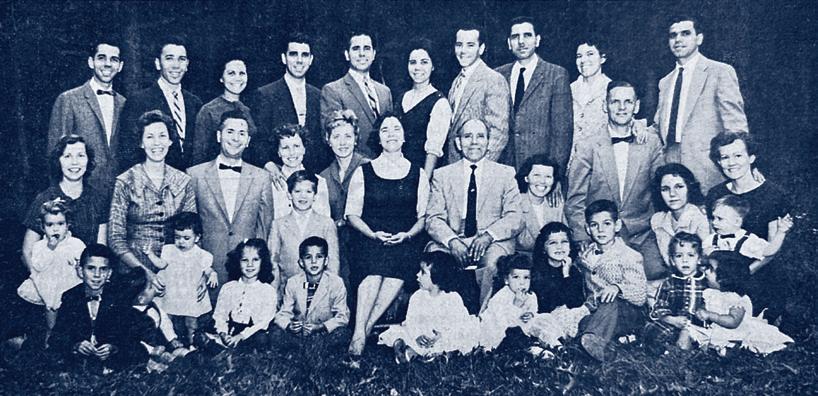
In 1909, at the age of 17, Frank Souza Damazo enrolled in the Pacific Union College Academy. He learned how to farm, was taught the value of money, salesmanship, and the value of an honest day’s work. His work ethic and brilliant mind were noticed by the school faculty, so he was assigned the job of driving the school’s prestigious delivery wagon.
World War I broke out during the summer of 1914, and just after completing his college education, Frank was drafted. November 11, 1918, found him on a long train ride east to New York and the battlefield. At a stopover in Indiana, however, he received the excellent news that the war was over! Each of the men were given $200 to head back home.
Frank took his $200 and caught a train to Bristol, Rhode Island, where he would surprise his two sisters with an unexpected visit. His sisters embraced him and his new Adventist beliefs. They helped him locate a Portuguese-speaking congregation, where that Sabbath morning he met Christina’s family!
It was around that Sabbath afternoon dinner table that young Frank and Christina shared their life stories, amazed at the similarities of their life journey up to that point. A friendship blossomed and grew into love and marriage. The Damazo family, including Pa and Ma, as their 10 children called them, would no more miss going to Sabbath School and church on time than they would miss breathing, eating, or sleeping.
Pa was a soul winner from day one. He started his own business and started witnessing to his customers. This, in turn, led to home small group meetings, during which he would study with a group of 10 to 20 of his customers. With the help of his boys, Pa conducted Bible studies, which, through the leading of the Holy Spirit, resulted in several hundred baptisms. Pa and Ma’s oldest son, Joseph, became a pastor, and he too rejoiced in witnessing more than 1,000 baptisms. Pa and Ma’s 10 children were all active in the church and in winning souls. There are now only four of the 10 children alive today. They all still share Pa’s love for soul winning.
Incredibly, there have been at least 2,790 countable baptisms as a result of that one piece of literature that Christina found in her garden so many decades ago.
Direct work in the Azores did not begin until 1931, when a colporteur sold Adventist literature there. By that time both Frank and Christina had left the island. Christina’s first contact with Adventism was attributable to the efforts of someone who never saw the fruit of their labor. “As early as 1892 G. R. Drew, of England, reported the sending of publications by ship to the island of São Miguel in the Azores. No results were known.”* Brother Drew will be surprised and blessed to learn the rest of the story when he gets to heaven.
* Review and Herald, Apr. 12, 1892, p. 230.
Paul Damazo, at age 96, still volunteers five hours per week. Norma Winders worked as a senior executive assistant to numerous professionals of major corporations before her retirement.
It was a hot Sabbath day. Church had just ended, and we decided to visit members who no longer attended. When we first saw him, he was sitting on a mat under a tree, finding respite from the searing sun. What we first smelled was putrid. The entire top of his head had no flesh; a terrible burn had left his skull exposed. He also had burned his left foot, which appeared to have rabbit hair and dung placed on it as a treatment, likely from visiting the local traditional healer.
As his story spilled out, we learned that he had had a seizure and had fallen into an open cooking fire. He had joined the Adventist Church in 2018, hoping that God would heal him from epilepsy. When no healing came, he stopped attending church and began drinking. The two didn’t mix well, and here he was, sick and hopeless.
We offered for him to come to the hospital as soon as possible; we would cover his expenses because he needed care. After a prayer and encouragement, we left, wondering if he really would come to our hospital. Many of the locals here are wary and distrusting of our hospital; they often come as a last resort, when it’s too late to do anything to save them.
Two days later he was in the operating room having his skull debrided in preparation for an upcoming skin graft. His charred toes were amputated, he was started on anti-seizure medication, and his journey to healing began.
Often the patients do not stay in their beds inside the hospital buildings; they prefer to sit outside where it is cooler. His particular spot was along a pathway I frequently walked, and each time I saw him, he had a sparkle in his eye and a smile on his face. We were happy to see him coming to church again after he was discharged.
I hope that one day he can make the connection that even though God didn’t heal him in the way he had hoped, God used His “hands and feet” here at the hospital to bring him healing. What a privilege it is to be used by God to restore health and hope.
Katie Waterbrook is serving abroad with her family as a nurse and mom to three.

GOD USED HIS “HANDS AND FEET” AT THE HOSPITAL TO BRING HEALING.
Some of us wonder if God is pulling His hand of protection away these days. Others wonder if God is coming closer than ever, protecting His people. No matter where you are on the wonder scale, it’s likely we can all agree the times in which we live are far different than anything we’ve seen before. Where do we abide in that?
Abide in worry? Abide in anxiety? Abide in wishes, wants, weariness? How about abiding in money or masquerades? Abide in fun? Abide in relationships? Abide in good scores? Abide in promotions, premiers, or promises? Though most of us wouldn’t say it that way, it’s exactly what we do. Abide in need and abide in life.
Sometime ago I was abiding in chores on a Sunday afternoon. Christmas and New Year’s had come and gone, and the decorations were due to be packed up for another year and put away. After one does that, the house looks a little lonely, so I decided to get out some fresh linens, dust the shelves, and put a few new things around while tossing older things. I began cleaning a glass candle vase, but it had aged and didn’t hold up well. The bottom of the vase broke out the bottom, leaving jagged glass in its wake. Fortunately it had been on the countertop when it broke, so I wasn’t hurt in that moment. Into the kitchen trash it


went, the bag got put in the garage, and I kept working merrily on my project. Our office had the week off work to bask in the aftermath of the holidays and enjoy our families and homes. Cleaning and nesting fit the afternoon, and I was enjoying it. Abide in home.
Toward late afternoon I went to the end of the driveway to bring the trash and recycle cans back up to the house. It had been trash day, so the cans were down by the street waiting for the garbage company to dispose of their contents. As one does, I picked up the kitchen trash I had put in the
garage earlier that day and placed it in the trash can with a couple other items, pushing down on the trash bag to allow it to go to the bottom. Seconds later the skin between my thumb and index finger was punctured; a large hole was gaping open with blood flowing quickly out. I’d forgotten all about the broken candle glass and pushed my hand right through it. Abide in pain.
Running into the house, I turned on the kitchen faucet and called my daughter to come help me. Fortunately she was on Christmas break from school, so she happened to be home too. We tied a kitchen towel around my hand in tourniquet fashion and decided I needed to go to the ER. I was bleeding quite a bit and feeling more dizzy and lightheaded by the minute, plus there was no way a bandage would help in this case. There was no way 10 bandages would help in this case. I waffled about going because I knew needles and stitches were in my near future, but my loving daughter did the thinking for us and determined I was going. She put me in the car, then grabbed her keys, and off we went to the ER. Abide in instruction.
“I’m going to need to stitch this up. I’ll be using four needles of lidocaine, so I want to prepare you that those will sting when I do that. I’ll need you to hold very still so I don’t accidentally prick another area of your hand or miss numbing you up,” came the doctor’s instructions to me.


“I’ll do my best,” I said, aching from pain and dizziness. He went to work, I squeezed my now-arrived husband’s hand, and my daughter watched in compassion. They all counted after each shot was given.
“One down. Halfway there. Almost there. Last shot.” I held my hand on his side table solid as a rock, but it definitely hurt, and the tears came. Word to the wise: don’t get lidocaine shots if you don’t need them. They sting like fire, and the needles in a fresh wound aren’t great either. For that matter, don’t push broken glass down in a trash can. You’re welcome for the wisdom. Three stitches later (should have been four or five in retrospect) and gauze bandaged around my hand, I was sent home to wonder if I had severed a nerve, tendon, or artery, or if I’d ever get the feeling back in my thumb. Abide in exhaustion.
The next couple weeks were an opportunity to be grateful it hadn’t been worse, but also a challenge to do everything left-handed instead of right. If I did use my right hand, it had to be using my last three fingers to open bottles or doors, fasten jeans or brush my hair, eat or cook, and type things at work. You use both hands far more than you

realize until you have only one or part of one. For a one-inch hole in my hand, it seemed like a ridiculous amount of interruption in my daily life and pain in my body. I began to have a very different view of people who have no limbs or much bigger physical challenges than I. Abide in gratefulness.
It’s been awhile now, and the stitches are out. Fresh new skin has formed, and the wound is infection-free inside the body and out. I’m happy things are healing, but when the circulation and feeling fully returns in my thumb I’ll be even happier. It’s a very weird recovery, and I’m ready for the internal part to heal and return to normal. I’m told it will take months to a year sometimes for vascular areas to heal inside. Life certainly brings the big and little unexpected chapters to us. Abide in time, waiting, adapting.
Was God abiding in the ER with me? I’m certain God lovingly held my hand rock-still for the doctor to work. I’m certain He lovingly equipped my family as vessels of support for me. I’m certain God gifted the doctor to sew thread on skin and evaluate wounds. And also, I’m certain God didn’t

remove my pain or heal me on the spot even if He hurt for me. So many of us feel the ERs of life right now. Joy is an emergency. Answers are an emergency. Trauma, jobs, school, money, open dreams, and feeling loved are all an emergency. Is God abiding in the ERs of our lives? Is God abiding in the ER of current events nationally and internationally? I’ve thought a lot about the answer to this very human and present question for many of us. I believe God is fully abiding with us. The pain may still be as present as He is. The devil may still be vying for victory in our ERs. Yet I believe God’s hand is on our hand, and I believe God is sending vessels to support us. I believe God gashed His hand to save ours. Abide in trust.
ABIDE IN SEARCHING
Is it always easy to believe God abides with us? No. Do encouraging words on a page solve our problems? No. Is life suddenly easy when we abide in trust? No. Does God fix the pain of problems while we wait for the miracle of majesty? No, not always. That’s a lot of important noes. That’s a lot of important hits to our faith. It’s a lot of important hits to fragility, famine, or fatigue. Life is hard. Where’s the “yes” question? Where’s the “yes” answer? When is the “yes” answer? Abide in searching.
ABIDE IN REFINING
Several years ago I was talking to a friend when they said something I’ll never forget. He said, “I have a list of things God would never want.” I asked why he felt that way and if he believed God made him. “I guess He made me, but I know He’s sorry He did.” My heart went splat. God’s heart
went splat. We talked for a long time about the story, about life and pain and the past. We talked about what causes us to feel so separated from a holy feeling. For the most part I listened. When someone is unwrapping self-worth, they aren’t looking for a pep talk. They’re looking for a place to simply abide. To protect privacy, I’ll spare the story of details, but at its core was a sense of failure. A series of things had happened, some caused by him and others not, but the result had been losing life as they knew it. My friend was abiding in failure. To keep it real, haven’t we all set up failure camp in our mind at one time or another? You can hardly travel this life without wondering about your worth either inwardly or outwardly. It’s rough, and it isn’t just a hand that’s torn open. It’s a life. Abide in refining.
If Christ were sitting here reading this with you, if Christ were sitting in your ER putting stitches on your mistakes or wiping tears of pain from your face, if Christ were sitting beside your chair listening to your “list of things He would never want,” what in the world would He say to bring such a need full circle for you?
Which of the “abides” would He pick for your mental desperation, your life’s hot mess, your flat-out loss of answers? Which of the “abides” would He pick to answer your dreams and desires to live free or live fierce? I can only cry out from my own experience, and I can only imagine from my own friendship with Him, but I would guess it’s this. From the holy lips of Christ Himself and within the holy embrace of His warm body, the Lord Himself would look straight at your yearning eyes and say, “It’s none of your abides, my beloved. It’s abide in Me. Keep your eyes on me. I got you. I. Got. You. Abide in Me.”
“So that Christ may dwell in your hearts through faith; and that you, being rooted and grounded in love, may be able to comprehend with all the saints what is the width and length and height and depth, and to know the love of Christ which surpasses knowledge, that you may be filled to all the fullness of God” (Eph. 3:17-19, NASB).
Heather VandenHoven is a freelance writer with a burning passion for Christ’s love, power, and friendship. In addition to Adventist Review, she’s written for NAD women’s devotional books and her blog ministry at lamblines.home.blog.
is 80 and living with gratitude every day.
She had a friend tell her about ways to take advantage of new tax benefits so that she could help in a greater capacity. She is as excited as ever to help the youth program at her church continue to grow. But Carol still has questions.
To learn more about Carol’s journey— scan the QR code, or visit willplan.org/Carol


Embracing health and faith
In John 10:10 Jesus says, “The thief cometh not, but for to steal, and to kill, and to destroy: I am come that they might have life, and that they might have it more abundantly” (KJV). For Seventh-day Adventists the health message has always been a key part of an abundant life. For most of human existence in this world, alcohol has been used. It disrupts and destroys humanity in so many ways, from its impact on crime and violence to economic costs and dissolution of family life.
Despite its known harm, throughout time alcohol has been incorporated into the daily life of many cultures and communities. Many individuals cannot conceive of relaxing, having a good time, celebrating, or romance without alcohol. Ancient documents indicate that access to beer was regarded as almost a human right. For workers in the ancient world, beer was often considered part of pay.1
Since 1979 and the description of the French paradox, alcohol has been touted as a health-promoting beverage offering cardiac protection. During the past few years this has been shown by a wide variety of carefully analyzed global studies to be false. In the latest medical research, alcohol has been shown to constitute a major
health burden with significant economic costs on the global community, families, and individuals.
Consumption of alcohol is related to an increase in strokes, aneurysms, and cancer, to name just a few of the health consequences.2 Research indicates that the total global cost for the consequences of alcohol consumption is US$1,306 per person per year. This comes to $1,873 per drinking individual and about 3 percent of the global domestic production.3 The U.S. government estimates that the total cost of excessive alcohol consumption in 2015 was $249 billion.4 The costs are staggering. It is easy to imagine how these monetary resources could be used in so many ways to improve the quality and length of life for many.
We often think that the health cost of alcohol consumption affects older generations, during which the lifetime effects of drinking take a toll on the body. Many types of cancers and cardiac diseases may result from a lifetime of alcohol use. A recent article published by the Journal of the American Medical Association,5 however, indicated that as a cause of death, it is not older adults who are most likely to die from alcohol consumption.
This study analyzed deaths that could be attributed to alcohol use. The largest rate of alcohol-related deaths was in the 20-34 age group, not the older age groups, as might have been expected. Overall, a little more than a quarter of all deaths in this age group were attributable to alcohol! Most deaths were because of accidents or violence. Alcohol is one of the major causes of death among young adults.
In some parts of the U.S. this number rose to 30 percent or higher. These areas included Montana, New Mexico, South Dakota, and Washington, D.C. No state had a rate below 20 percent. In every state, of all young adults who died, more than 22 percent died from alcohol use. Mississippi had the lowest rate of excess alcohol deaths, at 22.5 percent. It is important to note that it is in this age group that alcohol contributes more to deaths than any other single cause.
It is those aged 20-34 who are the least likely to die of any infectious or other chronic disease, but are more likely to die from their own risky behavioral choices. In addition, it is in these years that young adults are setting themselves up to
Alcohol is a major avoidable cause of death at every life stage.
die before 65 from alcohol-related liver disease or other alcohol-related health consequences. The data in this article notes that 9.5 percent of all deaths of those 50-64 are from alcohol use, often involving cirrhosis of the liver that developed over a life course of alcohol use beginning in their youth. Alcohol is a major avoidable cause of death at every life stage.
One of the things that emerged during the COVID pandemic was that the distribution of alcohol was deemed an essential business in many parts of the world. Amid an overwhelmed healthcare system, access to alcohol became a national priority. Laws were often changed to ease restrictions on sales and distribution, with home delivery of alcohol often permitted. Prior to the COVID pandemic, the World Health Organization had labeled alcohol a major health and cost burden for many countries.6
A wide variety of research indicates that alcohol consumption increased during the pandemic, particularly among those who already used high levels.7 The National Institutes of Health also concluded that a substance abuse disorder contributed to vulnerability to COVID-19 and more serious consequences.8 It will be interesting to see if this increase in alcohol use results in an increase in alcohol deaths and to understand how alcohol and other substance use contributed to COVID-related serious illness and death. Data suggests that the future cost of alcohol use will continue to increase.
Jesus clearly teaches us that we live in a disease-ridden world. Short of the second coming of Christ, we will all die, and many of us will die from one of the chronic diseases that afflict humanity.
We should avoid the theft of years that alcohol will inevitably bring to us, and renew our commitment to living our health message, including its clear stand on avoiding alcohol.
and other substances and a plant-based diet are related to a longer, healthier life—a core aspect of any definition of thriving.11
Let us work to receive the blessing of an abundant life from Jesus. He came to give us a more abundant life. We should avoid the theft of years that alcohol will inevitably bring to us, and renew our commitment to living our health message, including its clear stand on avoiding alcohol. Many factors affect longevity and quality of life. Some of these we cannot control; substance use we can control, and if we have a substance use disorder, there is help within the Adventist community.
1 E. Osterberg, “Control of Alcohol Availability: Historical and Current Policies and Their Current Effects,” in P. Boyle, P. Boffetta, A. B. Lowenfels, H. Burns, O. Browley, W. Aztonski, J. Rehm, eds., Alcohol: Science, Policy, and Public Health (Oxford University Press, 2013), pp. 361-368.
In addition to this fact, we know that many diseases arise and early deaths result from behavioral choices. It is these behavioral choices that are the focus of our health message. Data also suggests that more than 90 percent of our global members do not use alcohol, strongly support our health message, and see it as core to the church.9
Research data suggests that some Adventists have problems with alcohol. The Adventist Church sponsors Adventist Recovery Ministries. For those who are at risk of using alcohol or other substances, the church also has an excellent prevention program called Youth Alive. This program focuses on building resilience among youth to help them make better health choices and avoid substance use even in high-risk environments.
The most recent scientific data affirm our health message. Without alcohol use, thousands of young adults would still be alive today. Many families would not be missing loved ones or be without a spouse, parent, or child. So many young lives are cut short by alcohol. There is a lot of interest in the world today about how human beings can flourish. In what type of environment can humanity flourish? Several things have emerged from the search for answers. According to a large study from Harvard University, faith and religious involvement are essential components of flourishing.10 Faith involvement relates to less substance use and is associated with a longer and healthier life. A part of Adventist faith involvement is to live the health message. Decades of research clearly show that abstinence from alcohol
2 D. R. Williams and V. Monica, “An Update on the Effects of Alcohol Consumption on Health,” in Promoting the Public Good: Policy in the Public Square and the Church (Cooranbong, Australia: Avondale Academic Press, 2018), pp. 203-217.
3 Jakob Manthey, Sameer A. Hassan, Sarah Carr, Claudia Kilian, Sanna Kuitunen-Paul, and Jürgen Rehm, “What Are the Economic Costs to Society Attributable to Alcohol Use? A Systematic Review and Modeling Study,” Pharmacoeconomics 39, no. 7 (July 2021): 809-822, https://doi. org/10.1007/s40273-021-01031-8. Epub May 10, 2021. PMID: 33970445; PMCID: PMC8200347.
4 Retrieved from https://www.cdc.gov/media/images/releases/2015/ p1015-excessive-alcohol.pdf.
5 M. B. Esser, Leung G. Sherk, et al., “Estimated Deaths Attributable to Excessive Alcohol Use Among U.S. Adults Aged 20 to 64 Years, 2015 to 2019,” JAMA Network Open 5, no. 11 (Nov. 1, 2022): e2239485, doi:10.1001/ jamanetworkopen.2022.39485.
6 Retrieved from https://www.who.int/publications/i/item/97892415 99931.
7 Peter Anderson, A. O’Donnell, E. Jané Llopis, and E. Kaner, “The COVID-19 Alcohol Paradox: British Household Purchases During 2020 Compared With 2015-2019,” PLOS ONE 17, no. 1 (2022): e0261609, https:// doi.org/10.1371/journal.pone.0261609.
8 Retrieved from https://nida.nih.gov/research-topics/comorbidity/ covid-19-substance-use.
9 Duane C. McBride, K.G.D. Bailey, P. N. Landless, A. M. Baltazar, D.J.B. Trim, and Galina Stele. “Health Beliefs, Behavior, Spiritual Growth, and Salvation in a Global Population of Seventh-day Adventists,” Review of Religious Research (2021), https://doi.org/10.1007/s13644-021-00451-4.
10 Tyler J. VanderWeele, “Activities for Flourishing: An Evidence-based Guide,” Journal of Positive Psychology and Wellbeing 4 (2020): 79-91.
11 Gary E. Fraser, Candace M. Cosgrove, Andrew D. Mashchak, Michael J. Orlich, and Sean F. Altekruse, “Lower Rates of Cancer and All-Cause Mortality in an Adventist Cohort Compared With a U.S. Census Population,” Cancer 126, no. 5 (2020): 1102–1111.
Peter N. Landless is a board-certified nuclear cardiologist, board-certified internist, and Adventist Health Ministries director emeritus of the General Conference. He also serves as president of the International Commission for the Prevention of Alcoholism and Drug Prevention (ICPA). Duane McBride is the executive director of the Institute for the Prevention of Addictions and a research professor of sociology in the School of Social and Behavioral Sciences at Andrews University. He is vice president of the ICPA.








The growth paradigm
I’m Thomas!
Epiphany washed over me as I sat at my work desk. Ancient conversations from my youth flooded my brain—parents, coaches, and teachers imploring me to live up to my God-given ability. I thought of my own declarations through the years, “I’m just not good at that,” finally recognizing them for what they were—nothing more than self-imposed restrictor plates. For as long as I could remember, my heart had claimed the lie that you either had natural ability and aptitude for something or you didn’t. I exhaled as I reflected on my life of comfortable mediocrity. Was it too late?
My epiphany had been provoked by a Po Bronson article1 that recounted the story of a boy named Thomas (a middle name). Thomas was a fifth grader at a highly competitive school in New York City. “The school is reserved for the top 1 percent of all applicants, and an IQ test is required. Thomas . . . had scored in the top 1 percent of the top 1 percent.”2 In a school of geniuses Thomas and his friends were considered “the smart kids.” Yet despite his natural ability, Thomas had not enjoyed unmitigated success. Although he received almost constant praise regarding his intellect and capability from his parents, teachers, adults, everyone, Thomas’s father noted that the boy consistently retreated from challenges. In fact, Thomas appeared to gravitate only to tasks and activities in which his success appeared to be a foregone conclusion. Why?
Developmental psychologist Carol Dweck helps to provide the answer. In 1998 she performed studies on a group of 400 fifth graders that demonstrated the existence of two mindsets as it related to learning and development: a fixed mindset and a growth mindset.3 Students with growth mindsets tended to enjoy greater success than students with fixed mindsets. Further longitudinal studies showed that development of a growth mindset was more strongly correlated with success than IQ. The fits and starts that Thomas exhibited in his academic career clearly stemmed from a tendency toward fixed thinking.
Exercises delayed gratification.
Believes that most basic abilities can be developed through hard work.
Willingly receives input and seeks advice.
Believes that basic qualities, like intelligence or talent, are fixed traits.
Believes talent alone creates success.
Tends to be a “praise-junky.”
Demonstrates a love of learning and a willingness to try new things.
Develops a resilience essential for accomplishment. Transparent with difficulties, challenges, and shortcomings.
In many ways Dweck’s discovery is a modernizing of preexisting truth. In the nineteenth century Kate Sanborn stated in a series of lectures on the topic “What Is Genius?” that “talent is perspiration,” explaining that genius required more perspiration than inspiration.4 Examine stories of success, and you will find a similar theme. Success embraces hard work and challenges. Success views setbacks as opportunities for improvement. Success is process-oriented. Success is the result of the perpetual drive to improve. Success is a journey, not a destination.
In 1 Corinthians 9:25-27 Paul seizes on these same themes of temporal success and directs us to the eternal tying concepts of discipline and perseverance to spiritual application and reward.
Following Paul’s lead, I searched for more evidence of Dweck’s two mindsets in the Bible, and I unearthed a treasure trove of examples, just a few of which I will share here. Lucifer’s fall (Eze. 28:17) clearly outlines fixed thinking as he began to view God’s gifts as intrinsic to himself. Growth mindset is found in James 1:2-4, where we are told to count our trials and persecution as joy because
Spends time on tasks they already know they can accomplish; almost as a way of documenting their own intelligence.
Less likely to be open and honest about their struggles. Dislikes criticism.
the testing of our faith produces perseverance. Growth emerges again when Jesus promises success to the diligent who knock, seek, and ask (Matt. 7:7, 8). My favorite example of growth mindset is found in the righteous man (Prov. 24:16) who falls repeatedly and completely but rises continually. And finally, Jesus juxtaposes an example of fixed and growth mindset in the parable of the Pharisee and tax collector worshiping in the temple (Luke 18:11-13), pitting the obfuscation and pretense of the Pharisee against the transparency, honesty, and true repentance of the tax collector.
In the many examples I found, it became clear that Satan is the original fixed thinker and that sinful examples tend to be linked with a fixed mindset, while stories of overcoming tend to be connected with a growth mindset.
If Satan is the original fixed thinker, God is the source of growth. In the Genesis account we witness one of the most intimate scenes in Scripture as Yahweh crafts Adam with His own hands, then stoops low to the earth and awakens Adam with a life-giving, holy kiss. In this very first moment of face-to-face intimacy with God, Adam is perfect.
God could have preprogrammed Adam with everything he needed to know. Yet God does not take this course. He chooses growth, even allowing Adam to grow into an understanding of his need for a helpmate.
God takes Adam and Eve’s development so seriously that He appoints Himself as Adam’s lead instructor:
“The holy pair were not only children under the fatherly care of God but students receiving instruction from the all-wise Creator. They were visited by angels, and were granted communion with their Maker, with no obscuring veil between. . . . The mysteries of the visible universe . . . afforded them an exhaustless source of instruction and delight. . . . Their capacity to know, to enjoy, and to love would continually increase. They would be constantly gaining new treasures of knowledge, discovering fresh springs of happiness, and obtaining clearer and yet clearer conceptions of the immeasurable, unfailing love of God.”5
God has planted eternity in the human heart (Eccl. 3:11). According to Nelson Cowan, a cognitive psychologist: “Your brain’s ability to knit together new patterns is limitless, so theoretically the number of memories stored in those patterns is limitless as well.”6
The infinite potential of our hearts and minds suggests that eternal life was not the birthright that was lost in Eden. Eternal life was simply a prerequisite condition for us to enjoy our actual birthright—the gift of eternal growth and deepening relationship with God.
It is fair to wonder whether growth and fixed thinking are intrinsic to our nature, little more than a genetic lottery that we win or lose. Oh, the irony if that were true!
In her research Carol Dweck found that we are not born with fixed and growth mindsets per se, but we do develop a proclivity toward one or the other over the course of our lives, beginning at a young age. Children as young as 1-3 years of age are drastically influenced toward fixed or growth thinking by the type of praise offered to them.7 Frequent personal praise of intelligence, talent, and other fixed traits tilts a person toward a fixed mindset. Conversely, less frequent but specific and appropriate praise of process, dedication, and effort
steer individuals toward a growth mindset. The more time we spend turning our thoughts inward, on our own capabilities, on our limitations, on our qualities, and on our attributes, the more we will tend toward fixed thinking. It does not matter if we are focused on our accomplishments and positive attributes or if we spend time nitpicking every fault. Inward focus can lead only to limited, fixed thinking. The more time we spend focused on Jesus, however—His example, His promises, His triumphs—the more we are drawn to the infinite, to what is good, holy, and pure. Knowing what He would achieve on the cross, Jesus said, “Very truly I tell you, no one can see the kingdom of God unless they are born again” (John 3:3, NIV). In our rebirth in Jesus, freed from the shackles of sin, we reclaim our birthright. This rebirth combined with the deep and abiding impact of the language of the heart may be the reason we are counseled “to spend a thoughtful hour each day in contemplation of the life of Christ.”8
I’m embarrassed to share that my previous conception of perfection mirrored a toddler’s understanding of skill development. One day my little girl spied a person riding a unicycle and juggling simultaneously. She stopped in her tracks to drink in the scene. After a few moments she asked for a turn, fully believing she would hop onto the unicycle and, with instantaneous mastery, perform the very same feat she had observed.
That is how I thought of Adam and Eve: In their perfection they enjoyed lives filled with effortless accomplishment. Instant gratification attended their every action and thought. Challenge remained a foreign concept without definition. The thrill of delayed gratification, achievement as a result of perseverance, and eventual epiphany were not part of their experience. Perhaps this naive view most influenced my decades-long misapprehension of the gospel.
Have you ever wondered why all sin is not instantly removed when we are reborn in Jesus? I’m sure that every believer has experienced God’s gift of removing some sins almost immediately, even miraculously. But for each of us there are those other sins, stubborn and enduring.
In God’s growth paradigm, faith culminates in the restoration of God’s image of love (1 Peter

1:3-8). The inception of this re-creation process marks the beginning of an eternal journey with God. Initial “quick wins” in our journey build our faith and offer encouragement. The removal of difficult weeds lays the foundation for growth as we diligently build knowledge, virtue, self-control, perseverance, and godliness.
Jesus’ promise is “to him who overcomes.” If we allow Him, despite our sometimes halting, faltering will, He will illumine our lives, shining brighter and brighter unto the perfect day (Prov. 4:18).
GROWTH’S PROMISE TO LAODICEA AND TO US
I’m Laodicea!
Eventually thoughts of Thomas and mindset turned to Jesus’ loving admonishment to His endtime church. “You say, ‘I am rich; I have acquired wealth and do not need a thing.’ But you do not realize that you are wretched, pitiful, poor, blind and naked” (Rev. 3:17, NIV). Despite being advantaged in every way (cf. Rom. 3:1, 2), fixed thinking imprisons the church in pride, entitlement, and a lack of self-awareness; the embodiment of untapped potential and comfortable mediocrity.
Yet God’s divine power has given us everything we need for life and godliness (2 Peter 1:3). Jesus beckons us, “Behold, I stand at the door and knock” (Rev. 3:20), offering restoration and infinite relationship filled with discovery, purpose, and fulfillment. Ellen White says of our eternal home:
“There, immortal minds will contemplate with never-failing delight the wonders of creative power, the mysteries of redeeming love. . . . There the grandest enterprises may be carried forward, the loftiest aspirations reached, the highest ambi-
The more time we spend turning our thoughts inward, on our own capabilities, on our limitations, on our qualities, and on our attributes, the more we will tend toward fixed thinking.
tions realized; and still there will arise new heights to surmount, new wonders to admire, new truths to comprehend, fresh objects to call forth the powers of mind and soul and body. . . . And the years of eternity, as they roll, will bring richer and still more glorious revelations of God and of Christ. As knowledge is progressive, so will love, reverence, and happiness increase. The more men learn of God, the greater will be their admiration of His character.”9
This is God’s growth paradigm. This is our birthright. Jesus stands at the door and knocks. Won’t you answer?
1 Po Bronson. “How Not to Talk to Your Kids,” New York Magazine, Feb. 9, 2007, https://nymag.com/news/features/27840/, accessed Dec. 27, 2022.
2 Po Bronson, Ashley Merryman, in NurtureShock: New Thinking About Children, Sept. 3, 2008, https://www.goodreads.com/quotes/7411029 -thomas-his-middle-name-is-a-fifth-grader-at-the-highly.
3 Bill Murphy, Jr., “Want to Raise Successful Kids? Science Says Praise Them Like This,” Inc.com newsletter, Nov. 28, 2016, http://www.inc.com/ bill-murphy-jr/want-to-raise-successful-kids-science-says-praisethem-like-this-most-parents-do.html, accessed Dec. 27, 2022.
4 Maseena Ziegler. “7 Famous Quotes You Definitely Didn’t Know Were From Women,” Forbes, Sept. 1, 2014, https://www.forbes.com/sites/ maseenaziegler/2014/09/01/how-we-all-got-it-wrong-women-werebehind-these-7-famously-inspiring-quotes/, accessed Oct. 24, 2024.
5 Ellen G. White, Patriarchs and Prophets (Mountain View, Calif.: Pacific Press Pub. Assn., 1890, 1908), pp. 50, 51.
6 Danielle Venton, “Big Question: Can My Brain Get Too Full?” Wired, June 16, 2015, https://www.wired.com/2015/06/can-my-brain-get-toofull/, accessed Dec. 29, 2022.
7 Murphy, Jr.
8 Ellen G. White, The Desire of Ages (Mountain View, Calif.: Pacific Press Pub. Assn., 1898, 1940), p. 83.
9 Ellen G. White, The Great Controversy (Mountain View, Calif.: Pacific Press Pub. Assn., 1911), pp. 677, 678.
Gregory Milton is a health-care administrator in Atlanta, Georgia, and serves as an elder at Auburn Seventh-day Adventist Church, where he attends along with his wife and two children.

The beginning of a new year is a natural moment for transitions. We are all transitioning from 2024 to 2025. We will all become a year older this year. Some of us will transition to new jobs or different homes. Some of us will become parents or grandparents. And some of us will not live to see this year out. Contemplating all these transitions or other possible transitions is not a cold, clinical reflection. From personal experience and tapping into the experiences of many churches we visit in our conference here in northern Germany, we find that, overall, the prospect of change generates an underlying feeling of unease, discomfort, and even fear. The economic, political, or social realities of our world make this a very reasonable reaction. As Bible-believing Christians, armed with the knowledge that things will not get better over the long term, we can easily slide into an atmosphere of fear and be driven by and react from fear. But is this really what God offers? Is Adventism a transition from one existential fear to another?
The early Christian church in New Testament times completely lacked external support or opportunities that could bolster their faith. Things looked bleak in the first century A.D. Christians were persecuted. Society was in upheaval. War and unrest, political instability, famine, and other natural disasters, as well as extremely complicated social issues (including the pervasiveness of slavery), formed the soil in which early Christianity flourished. Christianity grew because the followers of Jesus seemed to have tapped into a new source of strength. Their lives were not based on underlying fear. They could count even hard things
“pure joy” (James 1:2), because, somehow, they had transitioned from an underlying operating system of fear to an underlying operating system of fullness.
They knew themselves to be beloved children. No longer cowering beggars, scrambling for a favor from God. As they heard the stories of Jesus’ life and death, they realized they were loved. This was the secret to their strong, loving communities that were so strangely attractive. They had no striking churches, universities, hospitals, or other impressive structures—but they portrayed vividly (albeit imperfectly) the characteristic that Jesus described as the glue holding together His followers: “A new command I give you: Love one another. As I have loved you, so you must love one another. By this everyone will know that you are my disciples, if you love one another” (John 13:34, 35; NIV).
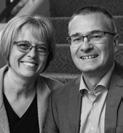
WE WOULD BE ABLE TO LOOK AT THE CHAOS AS OPENING CRACKS IN SOCIETY TO POUR IN GOD’S LOVE AND INTRODUCE THE HOPE OF A SOONCOMING SAVIOR.
Imagine what it would be like if, this new year, we individually and collectively switched over to a new operating system. What would our churches be like if we operated from fullness and not fear? We wouldn’t have to fear what’s going on around us. We would be able to look at the chaos as opening cracks in society to pour in God’s love and introduce the hope of a soon-coming Savior. We would be more than braced for coming upheavals. We would be so full of love that any bump or upheaval would serve to spill not fear but love.
Chantal J. Klingbeil , Ph.D., and Gerald A. Klingbeil , D.Litt., served the Adventist Church for nearly three decades internationally as professors, TV host, editor, and associate director. They now live close to the beautiful city of Hamburg, Germany, and serve in the Hanseatic Conference of Seventh-day Adventists.



Since COVID my life has been a mess, and I haven’t been able to get back on track. But I’m determined to fully commit in 2025 and beyond, until Jesus returns. How should I move forward?
A: COVID-19 has disrupted many lives, but the new year traditionally offers an opportunity to reflect on God’s blessings and renew our commitments. We commend your determination to move forward. God desires wholeness for us in every area of life (biblical shalom), and He is able to provide all we need to achieve it (Eze. 36:26, 27), starting today or any day of the year.
Seek God’s kingdom first (Matt. 6:33). Surrender to Him, trust in His promises, and pray for His Holy Spirit to bear His fruit in your life (Gal. 5:22, 23).
Prioritize physical health by adopting a wholefood, plant-based diet, and limiting processed, sugar-laden, and salty foods. Exercise four to five times a week, aiming for such activities as walking, swimming, or an active sport. Get seven to eight hours of quality sleep each night with a consistent routine. Drink plenty of water (eight-plus glasses daily). Schedule annual health assessments and necessary screenings to stay proactive in your wellness.
For cognitive and emotional health, engage in activities that nourish your spirit, such as journaling, painting, or gardening. Reframe challenges as growth opportunities and focus on the positive. Explore your beliefs about life’s purpose and avoid mental “junk food.” Read enriching books, take online courses, or learn new skills to keep your mind active. Renew your mind by actively changing negative thought patterns (Rom. 12:2; Phil. 4:8). Set boundaries on screen time and take breaks to avoid mental fatigue. Practice daily gratitude by listing three things you’re thankful for. If needed, seek emotional support from a therapist or counselor.
For relational health , connect regularly with family and friends, spend quality time together, and address unresolved issues. Build healthy
relationships that respect boundaries. Engage in a small group, volunteer, or participate in community service to foster a sense of belonging and connection.
For environmental health , declutter, simplify, and beautify your living space. Embrace such eco-friendly practices as recycling, reducing waste, and using natural and biodegradable products. Regularly spend time outdoors to reconnect with God’s awesome creation.
Nourish your spiritual health by dedicating daily time for Bible reading, prayer, and reflection. Honor the Sabbath as a day of rest to strengthen your relationship with God and others. Bless others through kindness, charitable acts, and supporting your church’s mission. Memorize and meditate on scriptures that promote peace and well-being.
God desires wholeness for us in every area of life.
Peace with God: Embrace God’s purpose and seek His guidance daily.
Peace with others: Seek out, share reconciliation, and forgive those who’ve hurt you.
Peace with self: Internalize your identity in Christ, recognizing that your body is a temple of the Holy Spirit (1 Cor. 6:19).
May you prosper and be in health, even as your soul prospers, and remember, you are loved with an everlasting love (Jer. 31:3). SHALOM!
Zeno L. Charles-Marcel, a board-certified internist, is the director of Adventist Health Ministries at the General Conference. Peter N. Landless, a board-certified nuclear cardiologist and Adventist Health Ministries director emeritus of the General Conference, is also a board-certified internist.
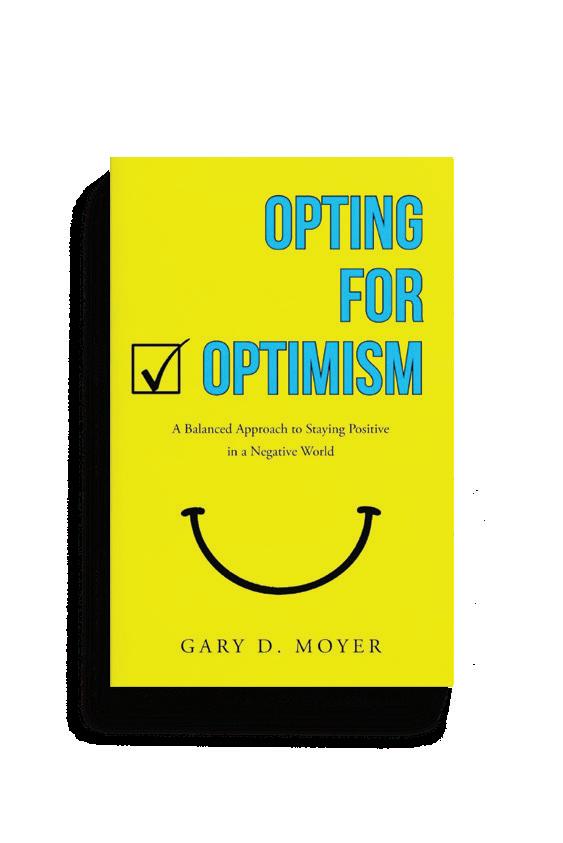
Gary D. Moyer, Opting for Optimism: A Balanced Approach to Staying Positive in a Negative World (Meadville, Pa.: Fulton Books, 2021), ISBN 978-1-63860-158-6 (paperback), 125 pages, US$15.95. Reviewed by Justin Kim, editor, Adventist Review.
One suggested book to start in the new year is Gary Moyer’s Opting for Optimism: A Balanced Approach to Staying Positive in a Negative World. Before you pessimists start rolling your eyes, the author defines his use of the term optimism as BIO—balanced, intentional optimism. This attitudinal shift results in better relationships, higher achievements, greater coping skills, and overall improvements in health.
What is BIO exactly? It’s the practice of finding good in your life, but from a realistic angle. It’s not saccharine denialism and the hopeful ignoring of problems, but the addressing of problems with faith. “Reacting is negative and counterproductive. Responding is positive and productive” (p. 79). Moyer offers practical strategies such as Bible memorization, motivational immersion, creation of positive posses (large support groups), and creative exercises, such as “automobile university.” He writes about demolishing negative pasts with forgiveness and extension of grace, while also learning to serve and being engaged in ministry. Last, the author offers that the great enemy of BIO is procrastination. Going one step further, he pinpoints that people resort to procrastination because of fear of failure and a lack of accountability.
What is appreciated about this book is that it is short; therefore, you can breeze through it and start strong on your New Year’s resolution to read more. But don’t let its length fool you. It is filled with practical prompts and bullet points in review at the end of each chapter. Moyer’s book has a biblical foundation and is very implementable.
Its strength for being short can also be its weakness. The author does refer to his hero Zig Zigler often, and the tone can mimic a self-help book at times. But there is enough practical information to inspire one to take a more positive and thankful outlook on life. Gary Moyer is a Seventh-day Adventist administrator who has vowed to donate all income from the book to the fight against human trafficking.
BibleMemory.com, Platforms: Android and Apple; Developer: Millennial Apps, LLC; Version: Free and Pro (US$9.99); Size: 20.9 MB; Languages: English and Spanish; Apple Store Rating: 4.7; Google Play Store Rating: 4.0. Reviewed by Justin Kim, editor, Adventist Review
There is one app that I have used consistently during the past 12 years. Its former name was ScriptureTyper, but it now goes by BibleMemory. It is an all-inclusive memory system that is an app on your Android or Apple device as well as a website, BibleMemory.com. The platform allows users to organize, memorize, and review, synchronized together on all devices. It also has a Bible reading function that is more primitive compared to other options, but its inclusion can nevertheless be convenient.
BibleMemory allows users to memorize in three ways. Kinesthetic learners can type letters through a three-step memorization process: Type It asks for the first letter of every word already shown; Memorize It asks for the first letter of some words; and last, Master It asks for the first letter of every word, but all hidden. Visual learners can draw, use flash cards, and utilize animations. Auditory learners can record verses with their own voice and play it back.
What makes this platform outstanding is the number of functions provided to assist in Bible memorization. The platform has 10 Bible translations plus the Spanish Reina-Valera. Users can choose their own verses to memorize or select suggestions offered by BibleMemory. Heat maps highlight which words are difficult zones. Users can also join groups to leverage social motivation in communities (Adventist and Sabbath School groups exist!).

The platform’s strong positives include its ability to organize verses and their review in a timely fashion. After having used this for more than a decade, I’ve easily memorized chapters (although recall is another story). Negatives include that the app and website’s aesthetics could be improved upon, though it is simple in the minimalist sense. Second, the verse being labeled as “memorized” in the app doesn’t necessarily correspond to the user actually having the verse memorized. The Free and Pro versions differ widely, incurring a cost to access some of the advanced features.
Overall, however, the benefits outweigh the minor negatives, especially after using it for a while. In the new year, why don’t you take the initiative to memorize and incorporate more of the Word in your life? Utilizing a filing and timing system such as BibleMemory will help ensure that memorizing is not only a New Year’s resolution but a new life’s habit.

From “Witch” to Witness awr.org/ranja
Ranja was held captive by the evil spirits that possessed her . . . until the day she turned on her radio.
Trading Guns for God awr.org/rebels
Rebel assassins have laid down their guns in exchange for a new life in Jesus . . . and they’re already leading others to Him!
Taking a Bold Stand awr.org/wisam
Wisam’s own family tried to stone and stab him for his belief in God, but today he is an Adventist pastor in the Middle East!



Seventh-day Adventist missionary. My sister and I grew up eating pounded breadfruit, building cooking fires in the jungle, and catching geckos by their tails (you’ll never forget it if you’ve tried it!).
My parents ran a mission clinic, and some of my first and most vivid childhood memories were made there. I remember drawing up syringes of lidocaine, translating for visiting doctors, and watching my mom painstakingly put in 40-some stitches on an eel bite. I still remember my little heart pounding as I anxiously watched her perform CPR on a tiny infant, and listened to the parents’ agonized cries when the baby died. When my little world was rocked by a move back to the United States at age 8, I knew I wanted to be a missionary when I grew up.
Matthew grew up in the Midwest, and while he was fully vested in the mission of church planting when his family moved to a dark county during his teens, he had never seriously considered being a foreign missionary. From the time he started working in software development he knew that not only did he enjoy it and have an aptitude for it, but there was also commercial demand for it. Over time that last justification shifted to a realization that there was also a great need for Adventist developers who were willing to use their skills in God’s work. He had spent the next 15 years doing app and web development for ministries and church organizations. That was his mission field.
During the weeks after that visit with our friends, Matthew and I had many late-night conversations and prayers. Was this the right time to take our children overseas? Were we the right ones to go? Could we bear to leave our families?
As we continued to discuss, pray, and research, all we knew about the needs in Asia began to grow into a mountain of conviction that God was calling us there. Although neither of us felt qualified to go to the mission field, we realized that there is always a reason not to go. Safety, family, work, money—the list goes on. While there certainly are cases in which God is not calling someone to a life of service overseas, in every case—called or not— there are reasons not to go. And if everyone with a reason not to go didn’t go, no one would go. We could look at others we felt were better qualified

than ourselves, but they probably had a reason equally as (in)valid as ours.
Six months later our plane touched down in Thailand. We spent the first year working on visa approvals and struggling to master Thai, which we found to be a difficult tonal language. There were hard days as we adjusted to life in Asia. But there were also wonderful moments as we became acquainted with the gentle, friendly, and fun-loving Thai people, and slowly acquired the ability to communicate with them in their own language. Eventually we settled in the city of Nakhon Sawan (meaning “heavenly city”). This city lies at the center of a province in the Central Valley with a population of more than 1 million people. The province has very few Christians and no Adventist churches or schools.
Pulling my mind back to the present, I looked at Somchai. Only a second or two had passed, and he was still looking at us expectantly. This is what we are here for! I thought to myself. Summarizing Jesus’ answer to a seeker with a very similar question, I replied, “Jesus’ greatest teaching is to love God with all our hearts and to love others as much as we love ourselves.”
Somchai’s face brightened. “That’s very good!” he exclaimed.
Although visible evidences of God’s work, such as our encounter with Somchai, have given us so much joy, we praise Him even more for the ways that His Spirit is working yet unseen on hearts in this city. Our experience of being led to Thailand has given us a greater awareness of the fact that even though God’s work in the heart may remain invisible for years, His Spirit is working still.
* Not his real name.
Rachel Leffler is a church planter living in Nakhon Sawan, Thailand, with her husband, Matthew, and their three children.

RACHEL LEFFLER
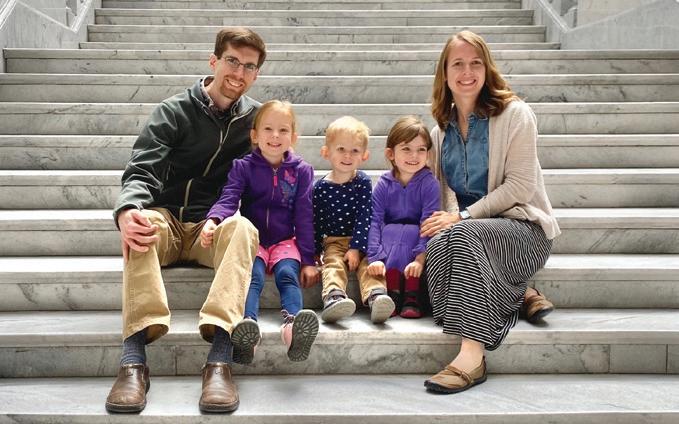
Leaning forward, Somchai,* a devout Buddhist, looked at us earnestly.
“What is Jesus’ most important teaching?” he asked. The moment felt sacred. Time slowed as I glanced at our three children who were rollerblading nearby, and my mind flew back over the events that had brought us to this moment.
IF EVERYONE WITH A REASON NOT TO GO DIDN’T GO ON MISSIONS, NO ONE WOULD GO.
Rewind two years, and you would have found us living in a little home that my husband and I had built together in Montana as newlyweds. Both our parents lived nearby; we had a wonderful church family, a large garden, and plenty of space for our children to run and play.
One warm summer evening we were visiting with some missionary friends who were on furlough from Thailand. During the conversation they mentioned rather offhandedly that because Thailand has great internet, it would be totally doable for my husband, Matthew (who
and Rachel Leffler with their three children
worked remotely as a software developer), to work online from there. Matthew had never expressed serious interest in being a missionary overseas, so I expected him to blow it off. Instead he started asking questions. The more specific his questions became, the more my mind began to spin.
As soon as the conversation was over and we had gone to our room, I cornered him. “Are you seriously considering missions?” I asked incredulously.
“Well, I guess so,” he responded. I was shocked. Looking back now, though, I really shouldn’t have been. Because, unbeknown to him, I had been praying for this very thing for the previous 10 years.
I’ve always been interested in missions. In fact, missions is practically in my DNA. When my family moved to a tiny Micronesian island when I was 3 years old, I became a very small fifth-generation



Prophecy Odyssey: You Can Know the Future! In a world on the brink of eternity, the need to study Bible prophecy has never been more urgent! Now you can get clear, logical, accurate answers about the future with this life-transforming series presented by Doug Batchelor, president of Amazing Facts International. During Prophecy Odyssey, you’ll delve into the cryptic prophecies of Revelation to learn what God’s Word really says about the last days and much more—preparing you to stand strong in these perilous times!
Recorded live from the Manhattan Center in New York City, this uncut version features uplifting music and Bible Q&A sessions along with the main presentations so that you can enjoy—and share—the full experience of this empowering, 15-part series. A bonus session features Pastor Doug’s inspiring personal testimony, “The Richest Caveman.”
